Peter Ivers was a visionary musician and television host whose career bridged blues, avant-garde theater, experimental rock, and even 80s adult contemporary. A Harvard-educated harmonica prodigy mentored and praised by Muddy Waters, Ivers moved to Los Angeles in the 1970s and eventually scored a variety of films such as Eraserhead and Grand Theft Auto, while also releasing genre-defying albums of his own material.
In the early 80s, Peter hosted New Wave Theatre, a late-night TV show featuring bands from the local Punk and New Wave scenes. In 1983, he was found murdered under suspicious circumstances, and even after being “investigated” multiple times, his case remains unsolved as of 2025.
Despite some initial praise from critics for his early work, Ivers remained largely unrecognized during his lifetime, with his legacy only now seeming to gain the attention of a wider audience.
The majority of the information in this article was found in Josh Frank's book In Heaven Everything Is Fine and Penelope Spheeris's podcast Peter and the Acid King. While most of the information online seems to be from Josh Frank's book, after a bit of research, it appears he got the chronology wrong on some of the events — his style of writing is a little hard to follow at times, so maybe he just confused himself. I know he confused me. Also: I wasn’t a fan of the made-up dialogue, or how he invented details of scenes that couldn’t be known.
With this article I’m hoping to strip away some of that, while trying to correct the timeline of events — and also point out some details that both In Heaven… and Acid King missed.
Note: The above playlist is in chronological order, starting in 1969, and includes all episodes of Peter and The Acid King.
Playlist in order of personal preference: Youtube | Spotify
Early Life (1946-1964)
Peter Scott Ivers (born Peter Scott Rose) was born in Illinois on September 20, 1946, and spent the first two years of his life in Chicago. His mother Merle Rose was a homemaker, and his father Jordan Rose was a physician — who became ill with lung cancer when Peter was two years old. The family relocated to Arizona in an attempt to help him recover, but after some initial improvement, his health started to decline again, and Jordan died in 1949.
A widow at twenty-six, now with two young children (Peter’s younger sister was born in AZ), Merle moved back in with her parents in Chicago. A few months after Jordan’s death, she took a trip to Florida where she met Paul Isenstein, a former Bostonian who had retired at 31 after some early success in the textile business. Merle didn't like Paul’s last name, so when they were married, she picked the last name "Ivers" out of the phone book as her new married name1.
The new family moved to Brookline, Massachusetts, where Peter grew up as a precocious, intellectually-gifted child. Merle was a free spirit who exposed Peter to a wide variety of music. A fifth-grade teacher's observation that Peter had an unquenchable thirst for knowledge set him on an elite academic track. He attended the prestigious Roxbury Latin School and then Harvard University.
Harvard Years (1964-1968)
After Roxbury, Peter attended Harvard University, where he majored in Greek and Latin while directing the lighting design for theater.
Peter expressed only mild interest in acting and was unschooled in the technical aspects of theater, which is why he had taken up lighting design to begin with — it required manual dexterity and a good eye, but little training.
Peter and his friend, Peter Johnson, could often be found working together on sets. Nearing the end of their freshman year, they earned a reputation as the wonder boys of technical theater and the nickname: The Two Peters.
Peter's true love was music. Through the Cambridge folk scene, he met Tom Barron and began sitting in on the spoons with his jug band2, the Rag Pickers. Peter had no formal musical training, but eventually found his instrument: the harmonica. He became obsessed with its sound, as he saw it as the most direct expression of emotion on a musical scale. His plan for the summer was to go to the store where his friend Tom Barron worked, buy a harmonica, and spend every waking moment learning how to play it.
At the beginning of his sophomore year in the fall of 1965, he disappeared from Harvard, only to return transformed — having gone to Chicago to study blues harp directly under Muddy Waters and Little Walter after meeting them at a local gig and being invited out to Chicago. That experience would shape the rest of Peter’s musical life. In fact, by 1968, Peter had earned the title "greatest harp player alive" from Muddy Waters himself3.
Peter also collaborated with avant-garde dramatists like Tim Mayer — producing works that would eventually go on to influence rock operas such as Jesus Christ Superstar — and befriended respected musicians like Buell Neidlinger, who became a lifelong mentor and collaborator.
It should be noted that, throughout his college years (and beyond), Peter’s best friend was Doug Kenny, who would later achieve success with his humor magazine National Lampoon, then with the film Animal House, and finally with his movie Caddyshack, before falling to his death from a cliff in Hawaii in August of 1980.
By the late 1960s, Peter had become a singular figure in Boston's music and art circles, blending classical, jazz, blues, and experimental elements in a way no one else was doing. He led a band called Street Choir, whose sound fused hard-driving blues with avant-garde jazz improvisation, and was one of the most popular on the local scene.
Post-Harvard (1968–1971)
Peter’s post-Harvard years were marked by wild creativity — scoring Tim Meyer’s crowd-pleasers for the summer theater — and close brushes with the counterculture’s darker fringes. Around this time, Peter had some level of interaction with the infamous Lyman Family (aka The Fort Hill Community), a communal group led by Mel Lyman — a fellow Boston harpist who achieved iconic status at the historic 1965 Newport Folk Festival, where Bob Dylan enraged the crowd with his electric guitar. Lyman silenced the booing crowd with an improvised version of “Rock of Ages”.
Mel Lyman and The Lyman Family

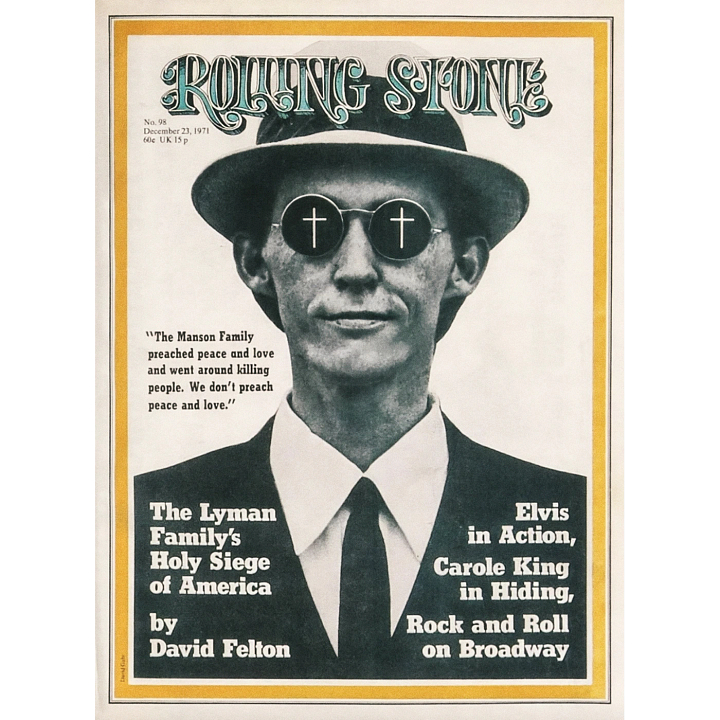
Mel went to Boston in 1963 to be with his girlfriend Judy Silver, and at some point, they both were involved with the International Foundation for Internal Freedom (IFIF) — a group of LSD enthusiasts led by Timothy Leary, who had recently been fired from Harvard.
After an extremely bad non-consensual trip induced by members of the IFIF, Judy moved back to Kansas, leaving a distressed Mel behind. Soon after, he began to view himself as destined for a role as a spiritual force and leader, and the Lyman Family was formed. Lyman’s commune would later be labeled a cult in an article by Rolling Stone, referring to him as the “East Coast Charles Manson”.
While there's no direct evidence Peter ever joined the group4, that he accompanied their band (presumably as a member) to a record label meeting at Epic Records in NYC suggests he was rather close. In fact, their band was also called The Lyman Family, so even if he didn’t join the cult itself, he was technically part of “The Lyman Family”.
Knight of the Blue Communion (1969)
It was through accompanying The Lyman Family to their record deal meetings that Peter got to know Epic Records executive Larry Cohn and finally landed his own record deal with Epic in 1968.
In 1969, Peter released his debut album titled Knight of the Blue Communion, much of which he had already composed during his musical-theatrical collaborations with Tim Mayer. It was a bold fusion of jazz, blues, classical, and psychedelic influences. It featured exotic instrumentation like bassoon, saxophone, and — weaving through all these seemingly disparate layers — Peter’s signature harp. It was also through his collaboration with Mayer that he found his lead singer Yolande Bavan, a Sri Lankan actress who started out in British theater, and after a chance encounter with Billie Holiday, fell into a career singing jazz.
The music was performed live with Yolande improvising vocals dressed in traditional South Asian attire. Critics raved, Peter was embraced by music aficionados as the newest thing in experimental music for his highly-accomplished fusion of jazz, blues, classical, rock, folk, and even medieval and Middle Eastern modes, but Epic failed to promote it, and sales were disappointing.
Lucy Fisher (1969)
Lucy Fisher (born October 2, 1949) is an American film producer. She was previously Vice Chairman of the Columbia TriStar Motion Picture Group at Sony Studios, Executive Vice President of Worldwide Production at Warner Brothers, Head of Production at Zoetrope Studios and Vice President of Production at Twentieth Century Fox. She was described by actor Jack Nicholson as "this casually brilliant vice chairperson of Sony Pictures. The executive that no one flees at parties".
Fisher grew up in Englewood, New Jersey, and attended Harvard University where she graduated cum laude with a degree in English in 1971. She met Peter after replying to an ad for a waitress position at the Signet, the Harvard undergraduate club for literature, music and theater. The ad turned out to be a prank on another waitress, but Lucy stayed and met Peter for the first time later that day. They soon became a couple, and she eventually joined Peter in LA after graduating in 1971 — they would remain a couple until separating in the late 70s/early 80s.
Take It Out On Me (1970)
For his second album, Peter collaborated with Indian-born vocalist Asha Puthli, whose sensual voice and improvisational style aligned perfectly with Peter's experimental vision. The sessions for Take It Out On Me were famously uninhibited and unhinged — Peter played in his underwear; Puthli recorded topless. Despite this electric chemistry, Epic shelved the album, calling it too esoteric, and dropped Peter from the label5.
Move to LA (1971)
Shortly after getting dropped from Epic, one of Peter’s friends from college — Tim Hunter, who moved back to LA to attend the Center of Advanced Film Studies at the American Film Institute (AFI) — called and asked him to come out to LA and score his film Devil’s Bargain.
Peter went out to LA planning on only working on Tim’s project, but did such a great job and befriended so many other film students that he stuck around for a while as an unofficial musician-in-residence, working on various student projects, as well as his own.
Sometime around Lucy’s graduation from college, Peter went back east and they both drove back to LA together, where they were met by mutual friend Doug Kenny. The timeline presented in In Heaven... is a little hard to follow, but apparently the three of them spent a year couch surfing in LA before both Lucy and Doug went back east at the beginning of fall 1972.
It was only six months back in New Jersey before Lucy decided that she needed to see Peter again — that puts her arrival back in LA sometime around February-March of 1973, which isn’t clearly explained in the book at all. In fact, the section named “LA, the Kleins’ House, 1972” starts with the sentence, “Lucy and Peter had been living with the Kleins for the good part of a year, since Lucy quit her publishing job [in NJ] and moved to LA”, which doesn’t make sense if she just left at the end of summer/beginning of fall of 1972 and came back 6 months later.
Unless the date when she and Doug went back east is incorrect (which is detailed in a section titled “LA, Summer 1972” — a year after Lucy’s graduation), the time spent living with the Kleins had to have happened in 1973, not 1972. And if Peter and Lucy spent around a year renting a house with the Kleins in Sierra Bonita, it wasn’t until around 1974 that Peter and Lucy moved into their Laurel Canyon place (which, again, isn’t clearly explained in In Heaven…).
Tropicana Motel & Duke's (1972-73)
As soon as Lucy and Doug went back east [end of summer/beginning of fall 1972], Peter took up residence at the Tropicana Motel on Santa Monica Boulevard in West Hollywood. The Tropicana became a hangout for rock stars in the late '60s and '70s, over the years hosting the likes of Janis Joplin, Bob Marley, Alice Cooper, Iggy Pop, Ramones, Blondie, New York Dolls, Clash, Jim Morrison, William S. Burroughs, Joan Jett, Tom Waits, Stevie Nicks and Lindsey Buckingham... just to name a few. It was also featured in Andy Warhol's 1972 film Heat.
Duke’s Coffee Shop is a diner below the Tropicana, which Peter used as his personal office space. He found a job as a carpenter building sets for NBC by day, and when he was done working, he spent his nights at Duke’s making plans and arranging meetings. He made business cards that simply read "Peter Ivers — Music for Cash", and would hand them to anyone who would take one.
Before leaving Boston, Peter had a falling out with his mentor and friend Buell Neidlinger over his exclusion from the recording sessions for Peter’s first albums. Buell had also recently moved to LA, the two met to patch things up, and were soon working together again. It was also around this time Peter befriended Van Dyke Parks.
Eventually, Lucy was ready to come back to LA, but only under the condition that Peter move out of the Tropicana. One of Peter’s friends from working on projects at AFI, John Klein and his wife, were looking to rent a house at the time, so Peter joined in and paid them rent for two rooms — one of which he and Lucy would stay in and the other for his home studio he used for recording demos.
For about a year Peter and Lucy lived with the Kleins while Peter worked on demos for his third album, and Lucy started her career at Zoetrope Studios working under Francis Ford Coppola. I can only assume, but I’m guessing they moved into their Laurel Canyon bungalow around the time Peter was signed to Warner Bros to record his third album Terminal Love.
Terminal Love (1974)
The Terminal Love sessions lasted about six months. For this album he took over vocal duties himself for the first time. Minus some of the heavy blues influence, Terminal Love’s clean guitars and minimalist aesthetics wouldn’t be out of place in any New Wave or Indie mix-tape a decade later or beyond, but at the time, the album flopped.
The book In Heaven… claims that drum machines were used, but I think this is another error, as there are clearly no drum machines on that album (especially not drum machines of the time). There is a very faint hint of a drum machine at the beginning of the first song, “Alpha Centauri”, but real drums come in within seconds and that’s the last you hear of anything even remotely drum machine-sounding. Perhaps Josh Frank was confused by hearing Peter’s demos, some of which do use drum machines. Also, as I found out from my appearance on Tune Tag with Brad Kyle: Fanny’s Alice de Buhr played drums on Terminal Love.
Another thing I think In Heaven… gets wrong is when it’s discussing the live shows supporting this album and why its promotion was cut. On October 11, 1974 (3 months after Terminal Love was released), Peter opened for the New York Dolls at the Hollywood Palladium and was said to have come out on stage in a diaper and a milk-filled squirt gun covered with a rubber penis, and then proceeded to squirt milk on the audience from the stage.
In Heaven… claimed this incident happened when he opened for Fleetwood Mac at the Universal Amphitheatre and the crowd booed him offstage. The only problems with this version of events are:
The Fleetwood Mac show happened in 1976, the month after his fourth album, Peter Ivers, came out.
Even if something similar did happen at the Fleetwood Mac show, the review from the following Monday only mentioned Peter wearing a diaper “a couple years ago at the Hollywood Trash Dance” [held at the Hollywood Palladium] after describing him as an “interesting eccentric”.
It’s not clear how a disastrous show in 1976 — regardless of the actual reason — killed the promotion of an album that came out in 1974, while not having any impact on the promotion of an album released just a month prior. It seems like there has to be some kind of mix up in the timeline.
One thing I have never seen explained, or even mentioned, is the band name used on this album: The Peter Peter Ivers Band. The only explanation I can think of is that it’s a reference to his friend from his theater days in Harvard (The Two Peters), who he was still friends with at the time.
Peter Ivers (1976)
Peter’s fourth (and final) album was the self-titled Peter Ivers released in 1976. This album has a slightly more refined and “Adult Contemporary” sound to it, which is likely the reason it seems to get overlooked when discussing Iver’s discography. It flopped, but that doesn’t make it any different from his previous albums. I think if he would have just leaned more into his Latin and Greek background — anything a little more esoteric or geekier than straight-forward narratives about love/relationships6 — this album (and most of his work) probably would have aged a little better. With this album it seems he lost some of the more quirky aspects that made the previous album stand out. Despite this, I’d argue that it still has a couple of his best songs on it.
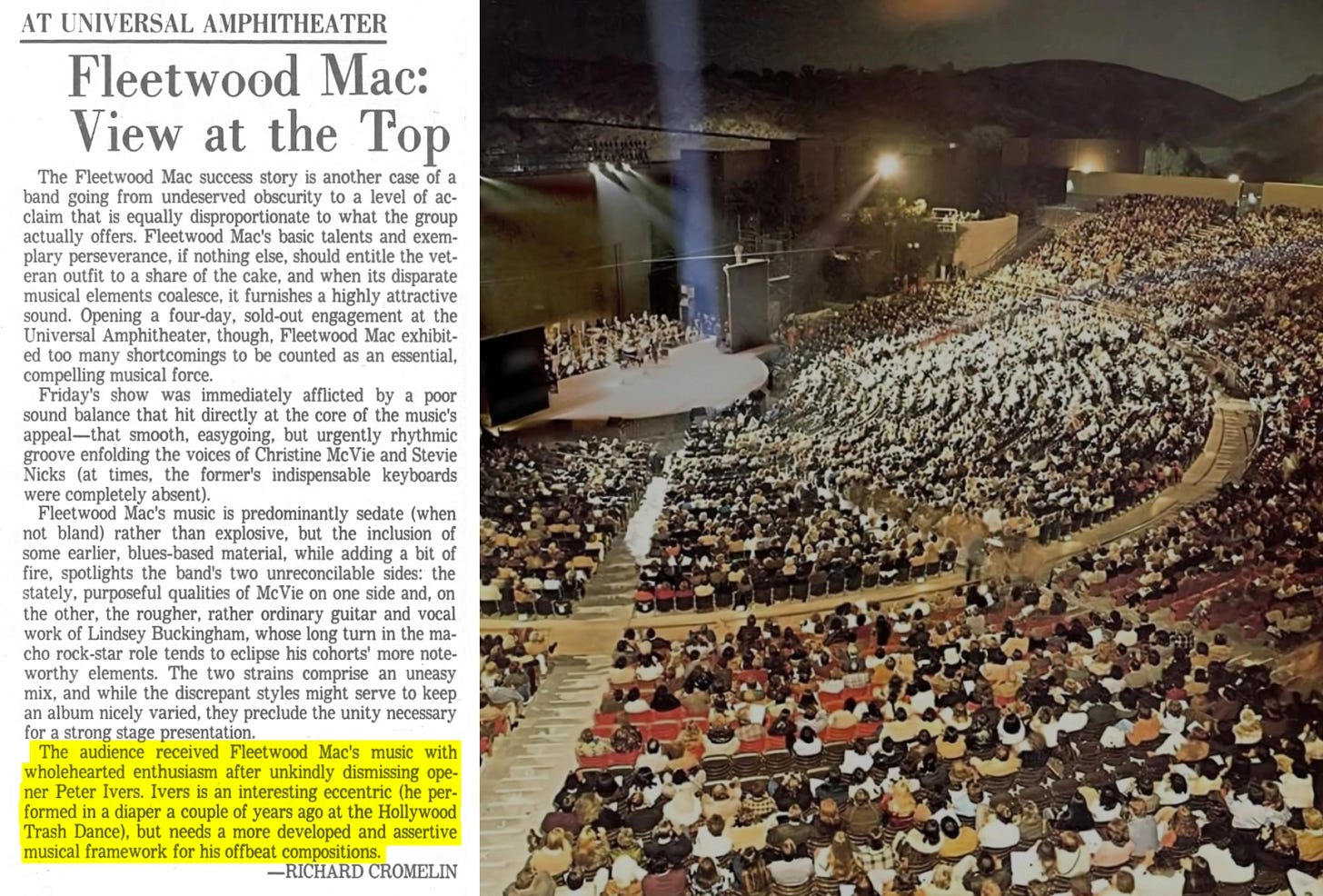
The month after his self-titled album was released, Peter opened for Fleetwood Mac. The story told by In Heaven… author Josh Frank is that Peter came out in a diaper and the crowd booed him off stage before finishing the set. But, as previously mentioned, I’m not sure if this is totally accurate. In Heaven… references Alice de Buhr not understanding Peter’s wacky antics, but… again, as I learned doing Tune Tag, Alice de Buhr played drums on the Terminal Love sessions in 1974 and only one live performance — she didn’t play on this album, so it seems rather clear she was referencing something in 1974… such as the show in 1974 at the Hollywood Palladium — which was also the only diaper reference in the 1976 review of the Fleetwood Mac show. Either way, the review from a few days after the show confirms the crowd wasn’t into it.
Eraserhead (1977)
Peter initially went out to LA only to score a film for his friend Tim Hunter at the American Film Institute, but he ended up staying to work on scores with other AFI students he met while he was there. Around 1974, through the connections Peter made at AFI, he met David Lynch, who was working on his film Eraserhead. At one point David gave Peter the lyrics he had written for “In Heaven (Lady In The Radiator Song)”, and Peter wrote the melody. Peter also provided the vocal track, which he recorded while sitting on a couch in front of David.
So I gave Peter the lyrics, and I apologized for how simple the lyrics were, and he said, ‘No no,’ and he went to work. And when I went there the next time, he sang the song to me, right in front of me, and he had done the organ in the spirit of Fats Waller. He sat on the couch and sang the thing in a falsetto voice, and it was a done deal. He gave it to me and I walked out. -David Lynch
David’s friendship with Peter led to him being signed to Zoetrope studios for his second movie, Elephant Man7, after Lucy Fisher arranged for a private screening of Eraserhead with Francis Ford Coppola in 1979.
While there’s no argument that the most popular cover of “In Heaven” is the Pixies’ version, there was a band who covered it years earlier: Devo. Once the film was finally finished, it was only played in a small number of theaters that catered to independent and cult films. One of those theaters was the Nuart Theatre in Santa Monica — which is where members of Devo first saw the film and became instant fans. Through their connections they arranged a meeting with Lynch to get his permission to cover “In Heaven” on their upcoming tour — this is also how the band became friends with Peter, who David brought with him to the meeting.
Bonus Pointless Trivia: While several bands did live covers of it (e.g. Bauhaus, Frankie Goes To Hollywood, Devo), there were a few that included it on their albums. In 1987, the same year the Pixies demo (Purple tape) was recorded, Tuxedomoon released a compilation album with their 1979 cover of “In Heaven” on it (previously released on a multi-band compilation). Though, technically, the Pixies’ version everyone knows is from their 1988 John Peel session, not the version on their demo. There are around 30 known covers of “In Heaven”, and the vast majority of them just happened to have come out after a certain other movie was released — I’m sure it was just a coincidence ;)
Grand Theft Auto (1977)
After finishing his second record, Ivers composed the score for Grand Theft Auto, Ron Howard’s 1977 directorial debut. At first, Ron was a bit nervous because, when he met with Peter for the spotting session, Peter only brought his harmonica, which wasn’t an instrument Ron saw as being the soundtrack to his movie. To his relief, he later learned that Peter only used his harmonica for initial compositional ideas. Though, Peter did sneak it in there a number of times throughout the movie. His song “Love In Flight” was featured in promotion, and played during the intro and the end credits.
Airplane! (1980)
I couldn’t actually confirm it, but the book In Heaven… and several articles (which might just be repeating/enhancing what the book said) claim that Peter was involved in the 1980 comedy Airplane! — specifically the song the stewardess played to the sick girl.
In the credits for the movie, Peter Yarrow — of Peter, Paul and Mary fame — was credited for “River of Jordan”, the song played by the stewardess. Peter’s name is only listed in a section titled “The Producers Gratefully Acknowledge” (and was the second to last name mentioned in the entire list of credits for the movie), so I can’t confirm what role he actually had in the production of this film, if any, but he was thanked.
“River of Jordan” credit is around 3:45, Peter’s name appears around the 4 minute mark.
New Wave Theatre (1981 — Cable Access, UHF channel 18)
Sometime in 1980, Billboard magazine editor Ed Ochs and Canadian-born musician/filmmaker/writer David Jove came up with the idea of showcasing the current new wave of local LA bands. In the first stages of development for New Wave Theatre, David would record bands at the various venues they played, but then arranged to film the bands at a central location.
While Ed and David wrote all the material themselves, and David edited all the footage, they needed someone to be the face of the show. It was through Peter’s connection to David’s wife, comedienne Lotus Weinstock, that he became acquainted with Jove — who asked him to be the host of NWT the day before the first episode was scheduled to tape.
The show started with a montage of clips while the title appeared and the theme song played before cutting to Peter. Both the beginning and end of the show were capped with Peter standing in front of the camera, wearing dark glasses to hide that he was reading his "stream of consciousness” spiel about life, art and music off cue cards that were actually written by Jove and Ochs.
These segments were taped in a retail space near Canter's Deli on Fairfax Avenue that was converted into Jove's personal studio/dungeon known as "The Cave", while the band segments were filmed at The Florentine Gardens on Hollywood Boulevard, cutting the 7 hours of performances into multiple episodes.
New Wave Theatre (1982 — Night Flight, USA Network)
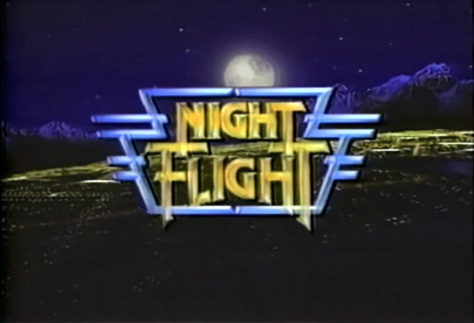
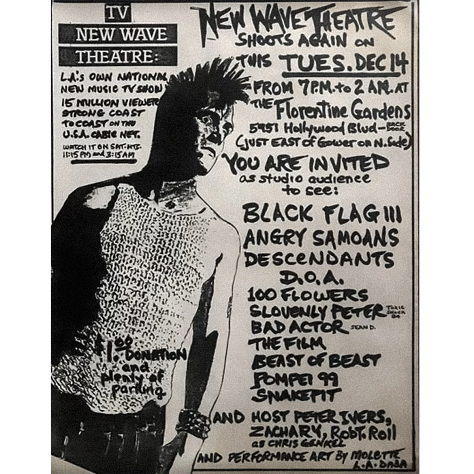
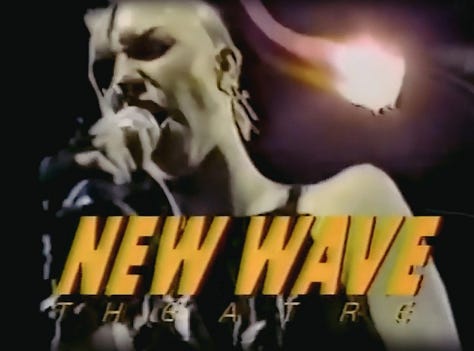
After a handful of sporadically-aired episodes, New Wave Theatre was picked up by the cable network USA Network to be included in its relatively new late-night program Night Flight. Each episode of Night Flight was 4 hours long and ran from 11 pm to 3 am on Friday and Saturday nights, NWT aired on Saturday nights. It featured blocks of reoccurring segments featuring underground music, comedy, and art. It was one of the first places on American television to see alternative content not generally aired on network television, or even other cable channels.
It's been said that New Wave Theatre was a predecessor to MTV, and while that might be technically true, it could only be by a few months — as MTV famously went on air August 1, 1981. I couldn’t confirm the date of NWT’s first episode, so it’s possible it’s not even technically true.
Though, it was likely to have been first to go nationwide. Again, I couldn’t find specific dates, but MTV was only available to households in certain areas of New Jersey on its initial launch in 1981, not going nationwide until sometime the following year. NWT, apparently, first appeared on the Night Flight lineup in January of 1982.
Ed Ochs has occasionally insinuated that the idea for MTV was stolen from him, but MTV’s roots go back to something called QUBE — an experimental two-way, multi-programmed cable television system launched by Warner Cable in Columbus, Ohio, in December of 1977.
One of QUBE’s most successful programs was called Sight on Sound, which played some of the earliest music videos. Noticing the success of Sight on Sound, Warner executives John Lack and Robert Pittman founded MTV… and the rest is history.
Move to Little Tokyo (1982)
Shortly after the death of Peter’s best friend Doug Kenny in August of 1980, Peter and Lucy separated and she moved out8. Peter stayed behind at their Laurel Canyon bungalow for a while before deciding to move to a loft space in Little Tokyo sometime in the later part of 1982.
321 East 3rd Street
Ignoring advice from his friends, Peter moved into a sixth-floor loft on the border of Little Tokyo & Skid Row on East 3rd street. Now, with all the open space, he didn’t have to store his equipment under the bed, or in a closet. He left his personal recording studio set up — at the ready any time he needed it. He also set up a TV monitor and video camera for rehearsals and video shoots.
Jekyll and Hyde… Together Again (1982)
Jekyll and Hyde...Together Again is a low-budget sex comedy based on the 1886 novella Strange Case of Dr. Jekyll and Mr. Hyde by Robert Louis Stevenson.
Peter’s song “Wham it” was played during the scene where Hyde steals a car to drive to Madame Woo Woo to see Ivy. Peter also appeared in the film performing his song "Light Up My Body" as the bandleader (harmonica player) in the fictional band “Ivy & the Shitty Rainbows”. He also has a non-speaking part in a scene later in the film, where he can be seen playing cards with his back to the camera.
The film also featured Cassandra Peterson as the ‘Busty Nurse’, who later became famous for portraying ‘Elvira: Mistress of the Dark’. Elvira's character appeared on an episode of New Wave Theatre the same year Jekyll and Hyde...Together Again was released.
Peter's Last Journal Entry?
In the chaos of the murder scene, one of Peter's friends stole his journal, so it makes sense images of it could have leaked online, but I’m not totally convinced this is his journal. Multiple sources have cited the line "Nervous about meeting J tonight", and this image does match, but… it appears that the entries shown are from February 23 and 24 of 1988, and then February 23 of 1989.
At first I thought his last entry was “number 89” and he was filling in the pages like it was a normal notebook, but, if you look closely, “88” is repeated as if it had been filled out the way it was designed... which would make it impossible for this to be Peter’s journal.
Peter Quits New Wave Theatre (March 3, 1983, 12-2am)
In the early morning of March 3rd, Peter went to David Jove’s Cave to record what he knew was going to be his last monologue for the show. After reading his lines, he then delivered the news that he was quitting. David and Peter apparently got into a rather intense argument, and then Peter left to go home. After Peter got home, he called his friend Laurie Riley around 2:45 am, and then eventually fell asleep in bed fully-clothed, which he was known to do.
Peter’s Murder (March 3, 1983)
On Thursday, March 3, 1983 Peter Iver’s lifeless body was found with blunt force trauma to the head by his friend and neighbor Jim Tucker. It was later determined that a large stake-driving sledgehammer that Peter had in his loft was used (given to him by a friend for protection). Jim went to check on Peter at the request of Peter’s friend Anne Ramis (wife of Harold Ramis) because he wasn’t answering his phone, and they were supposed to meet up earlier in the day. Jim came back to the phone to tell Anne he found Peter covered in blood, and saw blood splattered on the walls. He then hung up and called the cops.
The cops reportedly took a while to show up, and in the meantime, other people started showing up to the scene. The first of which was David Jove, followed by, what seems to be one of Jove’s calling cards, a throng of punks causing chaos — and in the process contaminating the scene… all, apparently, while Peter’s blood-covered corpse is laying on the bed. Beside Jove and the Punks, some of Peter’s Hollywood friends showed up as well. Anne and Harold Ramis made their way there, along with Paul Michael Glaser.
By the time the cops got there the scene was complete chaos. The story goes: the scene was so out-of-hand that the bewildered cops looked over at Paul, who played Detective Starsky on Starsky & Hutch, and asked, “What do we do, Starsky?”.
The police eventually determined that due to a missing tape recorder that it must have been a burglary gone wrong, and there haven’t been any significant changes to the story since then.
About five weeks after Peter's death, Lucy Fisher hired private detective David Charbonneau, but due to the botched initial investigation, the renewed investigation resulted in nothing except years of random phone calls from David Jove seeming to taunt Charbonneau until Jove's death in 2004.
National Lampoon's Vacation (1983)
A song Peter wrote with Franne Golde called “Little Boy Sweet” was recorded by June Pointer of The Pointer Sisters, and then used in the movie National Lampoon’s Vacation, which came out 4 months after Peter’s death.
Nirvana Peter (1985)
A posthumous retrospective of Peter’s work, produced by long-time Ivers associate Linda Perry (not that one9). Four of the twelve tracks were from Peter’s previous two albums, the remaining material consists of selections of original demo versions of songs for his 1981 musical revue Vitamin Pink, and his 1978 musical Nirvana Cuba.
Who was David Jove?
Turns out that’s actually a really good question. Born on December 14, 1942, in Toronto, Canada, David Henry Schneiderman, the son of a wealthy real estate broker, first got into music in the mid-1960s. He took up guitar and piano, writing and recording his own compositions, and began to experiment with 8mm short films.
He also became obsessed with mysticism, particularly the writings of British occultist Aleister Crowley, who David took as his teacher. He committed himself to mastering the occult and the Qabalah, and became one of Crowley's most active and loyal disciples.
When David found Crowley, he went all in — obsessively reading everything Crowley related, even going so far as connecting with the members of the OTO10. His house had a pentagram on the living room floor and a giant poster of Crowley on the wall. He even re-published his own editions of Crowley's Moonchild, Diary of a Drug Fiend and Little Essays Toward Truth.
There isn't a lot of information about this time of his life available online, and seeing as Aleister Crowley was practically woven into the drug lore that erupted during the 60s, it’s not clear whether David’s obsession with LSD came before or after his obsession with Aleister Crowley. Either way, by the age of 24 he wound up heavily involved in LSD production and distribution, and then made his way to England.
Rolling Stones Redlands Bust (February 12, 1967)
For reasons unknown, David chose to go to England and in the process was caught with marijuana and/or hashish by customs. Apparently, it was MI5 or MI6 agents working with COINTELPRO agents — the FBI's Counterintelligence operation focused on discrediting American groups deemed to be 'subversive' — who gave David the ultimatum of setting up The Rolling Stones to avoid prison time. David was a heavy drug user, but had a quick wit, which made him the perfect choice to infiltrate the band’s inner-circle.
Just after eight o'clock, on the evening of February 12, 1967, the Sussex home of Stone's guitarist Keith Richards, known as the “Redlands estate”, was raided by a force of twenty police officers. Inside, Keith and his guests — including Mick Jagger, Marianne Faithfull, Robert Fraser, and "Acid King" David Schneiderman — relaxed after day-tripping on LSD. David’s “portable pharmacy” — a briefcase filled with numerous illicit drugs — was inexplicably never searched and he disappeared from the scene immediately afterward.
Mick Jagger and Keith Richards' attorney claimed at their trial that David Schneiderman had been planted by the News of the World as an agent provocateur. The newspaper described the allegation as a 'monstrous charge', but later admitted that it was the 'reliable source' whose tip-off led to the raid. David was the only newcomer to The Stones' inner circle. By process of elimination, it became obvious that he was the plant.
It's not clear if it was before or after the Redlands bust, but apparently, David was busted again with drugs and temporarily jailed in NYC, but was almost immediately set free to go back to Canada with no repercussions.
He was recognized years later by Marianne Faithfull — who was there for the Redlands raid — when her friend, Marget Abbot, took her to David’s “cave” one night in 1985. Though, by then he was known as David Jove. “Jove” being only the latest (and final) alias he was known to use.
Known Aliases
David was often seen holding multiple passports, all with different names. I haven’t seen this adequately explained anywhere, but, for whatever reason, that never seemed to be an issue in any of the three countries he was traveling between — even while being in contact with the police in all three.
No two groups of people seemed to know him by the same name. Some in the circles close to the Redlands incident knew him as a Californian named “David Britton”, others as “Mr. X”, or the “Acid King”. Even at the Redlands trial, the court documented him as “David Sneidermann”.
Over the course of researching this article I found 11 different names referencing the person we’re calling “David Jove”.
David Schneiderman
David Sniderman
David Schneidermann
David Sneidermann
David B
David Britton
David Maxxson
David Jordan
Mr X
The Acid King
David Jove
Lotus Weinstock
In 1969, two years after the Redlands bust, David was back in Toronto and met Marlena “Maurey” Weinstock. Weinstock was born in 1943 in Philadelphia, Pennsylvania. After high school, she went to Emerson College11, but dropped out and moved to New York City to try acting and dance, and succeeded in acquiring a few Off-Broadway roles, performing under the name “Maurey Hadyn”. Around 1963 she became a hostess at The Bitter End in Greenwich Village — one night Bob Dylan supposedly tried to get in for free, but she still made him pay.
In 1965, when she was 22, she met and started dating Lenny Bruce, 40, who she was engaged to at the time of his death from a drug overdose in August of 1966.
There’s no information available about why, but 3 years later she made her way to Toronto where she met David. Marlena and David apparently bonded over LSD — having found a new way to produce it — and then hatched a plan to go back to England and sell it. About two weeks later, they were married while still in England, and at some point, went back to Toronto where their daughter Lili Hadyn was born on Christmas day of that year.
Around 1972, David, Marlena, and Lili moved to Los Angeles. Marlena’s recent interest in spirituality led her to join the Source Family, a cult known for its vegetarian restaurant on Sunset Boulevard that was frequented by the likes of Steve McQueen, Goldie Hawn, Marlon Brando, Joni Mitchell, John Lennon, and Marlon Brando.
The Source Family was led by a man referred to as "Father Yod", who, just a few years prior, was known as James Edward Baker. As James Baker he was known as a bank robber who murdered 2 people “in self-defense”, and then a third one in 1969 — the husband of the woman with whom he was having an affair.
Father Yod gave Marlena the name “Lotus”, which is the name she would be known by for the rest of her life. At some point, David was said to have “rescued” Marlena (now Lotus) and their daughter Lili from The Source Family. It was around this time Marlena started her career as stand-up comedian “Lotus Weinstock”.
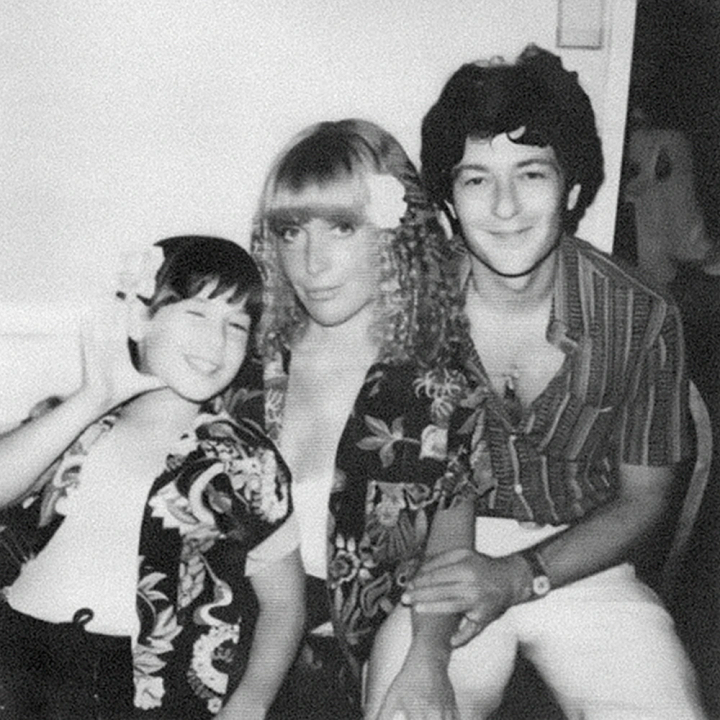
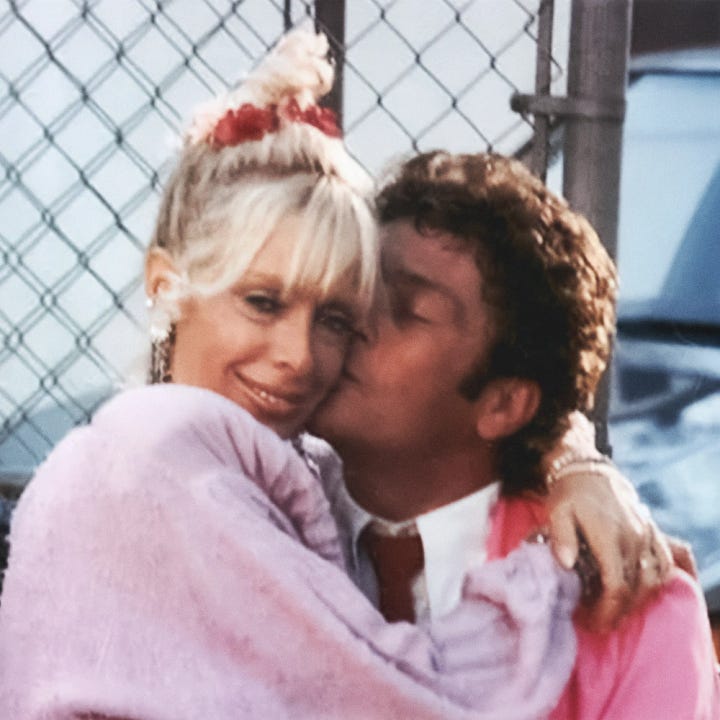
In 1982, right as she was poised to go to the next level of fame, she released a book called The Lotus Position. She had asked Joan Rivers to write the forward, and, after initially agreeing, Joan declined and mailed the manuscript back to Lotus.
Before Lotus could get the mail that day, the package was opened and someone scrawled a bizarre message to her, mentioning that “Joan Rivers wouldn’t get away with it”. A few days later Rivers received a vicious death threat in the mail that included graphic descriptions of ripping her husband’s balls off and force-feeding them to her. An investigator hired by Rivers concluded that the letter came from Lotus, which she always denied, but it tanked her career anyway. In 1987 Lotus and David ended their 18-year marriage.
Ed Ochs
While Marlena and Lili joined The Source Family when they first moved to California, David was busy working on his music career, which is how he started working with Billboard columnist Ed Ochs.
Ed Ochs joined Billboard in 1967. He covered both the Rock and Soul music revolutions of the late 60s & early 70s in his columns, interviews, and concert reviews. He also helped write and produce both of David Jove’s albums. David’s first album, Sweeter Song, came out in 1974, and the follow-up, Into The Shrine, came out in 1977.
It’s safe to assume that David had adopted his “Jove” alias at this point, as for both these albums he used the one-word artist name of “Jove” — presumably as a play on the phrase “by Jove”, which was prominently featured on the back covers of both albums.
Coincidentally… or not… “Jove” is an alternate name for Jupiter, king of the gods in ancient mythology: one day Jupiter had a headache and asked Vulcan, god of fire, to get a sledgehammer and split his skull open. Vulcan brought his sledgehammer and split open Jupiter's skull with a single blow, and out came Minerva/Athena — the wisdom that comes from Jupiter's brain, and occasionally makes it ache.
There’s a chance Jove was also still using his “original” name at this time as well. The story goes: Peter and David first met each other at a party in the early 80s through Lotus Weinstock — but there’s a possibility they crossed paths, at least professionally, years before then.
In 1977, the year David released his second album, one of the movies Peter worked on, Grand Theft Auto, was also released. In the credits for the movie there is a Recording Mixer named… David Schneiderman. I haven’t been able to confirm whether it’s the same person, and it’s likely not possible now, but I still think it’s an interesting detail.
By the early 80s Ed and David were still working together, and that’s when they came up with the idea for New Wave Theatre. They apparently remained friends until Jove’s death from pancreatic cancer in 2004.
The Only Man Gandhi Would Have Slapped
In a 2015 interview with music magazine Innerviews, Lili Hadyn, while talking about her father David Jove, was quoted as saying "My mom used to say 'He was the only man in the world who Gandhi would have slapped'", and after digging into the details of his life, and reading of firsthand encounters with him, I can see how that makes sense... as long as David didn't kill him before he had the chance.
Even though David Jove being the main suspect in Peter Iver's murder is mentioned in both of their Wikipedia pages, I haven’t seen anyone compile a list of the insane number of details that all point in his direction. Seeing it all in one place, it really makes it obvious that the only real question left is why David Jove wasn’t even questioned in the 20 years he was alive after Peter’s murder.
His lifelong dedication to the teachings of Aleister Crowley: Crawley's writings focused on concepts such as Chaos Magik, and taught that power was assumed through the exchange of energy, and that taking power wasn't immoral. In Crowley's view, there was no difference between consensual sex and non-consensual, or between natural death and murder.
His long history of various illegal activities: drug production, international drug distribution, owning multiple fake passports, making/mailing death threats, and the murder of 1 other person: Jove told his brother-in-law, James Weinstock, that he killed a guy for messing with his car — and in another story it’s said he was being questioned by the police for shooting someone (for messing with his car), but he was tripping so hard they let him go because they thought he was insane… or something.
His long history of violent and erratic behavior: Despite being rather charismatic, he was known to lose his temper and threaten those around him using guns and knives — occasionally injuring himself in the process: shot himself in the foot after putting a gun in Lotus’s face, and cut off one of his own fingers in another incident.
His long history of drug abuse: from acid, to pills, to cocaine… he was known to frequently be high on something.
Considering his history, any one of the following examples should have made David the prime suspect, but somehow, all of them combined didn’t lead the LAPD to suspect him at all. In fact, they didn’t even question him — and the reason will surprise you!
David Jove was the last person to see Peter alive… and they just happened to have a massive argument after Peter told David he was quitting David’s show — which meant the show was dead, and just hours later, so was Peter.
David Jove was the very first person to show up after Peter’s body was discovered, and then stole several items from the scene: a blood-soaked sheet/blanket from the bed Peter was killed on, Peter’s watch, and the sequin jacket Peter was frequently seen wearing on New Wave Theatre.
Second to the scene were the punks, for some reason. As mentioned, they completely contaminated the crime scene, making it impossible to do a proper investigation. This follows a pattern with Jove, who seemed to cause chaos wherever he went.
For instance: after appearing on NWT, the band FEAR got to be on Saturday Night Live12, which famously ended in chaos. So, it shouldn’t be much of a surprise, David Jove flew out to NYC to be there that night — and he wasn’t the only person making travel arrangements to be there: apparently, NY/NJ punks weren’t good enough, and, for some reason, Lorne Michaels called Ian McKye (kind of an odd contact to have) to bring up punks from DC to add to the chaos.
This pattern emerged again after Peter’s death while filming the pilot to an attempt at a NWT spin-off, The Top.13 Despite this show not featuring punk bands, some of the same punks were there and sabotaged the filming. This incident, plus David’s increasingly erratic behavior caused the new show to never go beyond filming its pilot.For weeks after Peter’s murder, David would answer his phone, not with “Hello!”, but asking “Who killed Peter Ivers?”
He apparently also threatened NWT regular and friend of Peter, Tequila Mockingbird, telling her she was ‘next’ (to be killed) over the phone.
In the previously mentioned Innerviews interview, Lili Hadyn effectively said that the death threat Joan Rivers received in the early 80s — which was determined by a detective to have come from Lotus — was actually the doing of her father, David Jove.
Not only did David Jove steal items from the crime scene — which included the bloody sheets Peter was murdered on — on a podcast called Rarified Heir, his daughter, Lili Hadyn, revealed that he actually slept with the bloody sheets until the day he died. On at least one occasion Jove showed them to someone — his friend and fellow occult-enthusiast, Ken Bow.
Jove reportedly invited Don Bolles, drummer for Germs, over to his place and told him a story about how he sent the watch he had stolen from Peter to a psychic, who apparently sent Jove an audio tape of the “reading”. Jove played the tape for Bolles, and it was a re-enactment of Peter’s murder… by someone who didn’t know Peter, but was said to sound just like him.
Coincidentally, the only thing reported missing from the crime scene — and why Peter’s murder was written off as a burglary gone wrong — was a tape recorder.14The day after Peter’s murder, Jove went to the police and supposedly told them that he’s innocent, but also that he was in the country illegally.
I’m not sure why going to the police and confessing to a lesser crime made sense, but according to Ed Ochs, that’s what he did. After years of claiming to have to “lay low”, the first thing Jove did — well, second thing, after stealing items from the crime scene — is go right to the police and tell them he was in the country illegally, which was the reason he had to keep a low profile in the first place. And, somehow, that led to him never being questioned. What?!
Protected, but By Whom?
In his book Freedom Spy, Ed Ochs mentions that David said he was “protected”. It’s not clear if this is Ed’s interpretation or David’s, but apparently David Jove thought this protection was more of the spiritual kind, as a blessing for his devotion to the teachings of Aleister Crawley.
Though, when you consider his previous history of working with COINTELPRO & MI6 agents, and then also intelligence agencies’ history of working with drug addicts & deranged occultists… it kinda seems a little different.
Especially when you consider that, after the death of Germs’ frontman Darby Crash in 1980, LA’s punk scene was increasingly seen as dangerous. While COINTELPRO was officially ended in the early 70s, similar operations were active well into the 80s — there are plenty of accounts of punk shows in LA being monitored by shadowy figures and shut down mid-show.
The fact is: there was a show called New Wave Theatre that went out of its way to focus on punk bands (despite many of them hating New Wave), and was produced by someone who, at one point worked with COINTELPRO agents. This person made sure that the punks’ violent antics were always on public display — first locally, then nationwide. And if it wasn’t on NWT, it was on SNL, or at the taping of the pilot for The Top… or at the scene of Peter’s murder with his corpse still laying on the bed. Every time with a central figure involved.
Should it be considered a coincidence that within a year of Peter’s murder, LA’s punk scene was effectively over? Was Peter’s murder, and the punks’ association with it, the final blow to an already-splintering scene? Could it be that NWT was actually part of an intelligence operation meant to undermine a subversive cultural element by associating it with violence & murder? There’s no evidence for it, but…
That would explain why David Jove seemingly got away with so much… and why the explanations for why he got away with those things don’t make a lot of sense. That would explain the LAPD’s mishandling of the case from the very start. And it all lines up pretty well with the decline in LA’s punk scene.
Over The Edge
This all gets a little weirder if you’re willing to take it a step further: there are a number of people with theories about intelligence agencies and the entertainment industry themselves being involved in the occult — and through that lens, Peter’s death takes on new meaning. But it’s not only his death that’s interesting here, it’s a certain pattern in popular culture over the decade that followed.
I don’t take this 100% seriously, but it is kinda “fun” to think about: Peter Ivers was murdered with an old-fashioned circus sledgehammer to the skull… ok, that’s not the fun part… but after his death, for whatever reason, sledgehammers hitting people in the face or head — or just the concept of hammers in general — was a bit of a theme throughout popular culture for the decade that followed Peter’s murder. Some examples include:
In 1984, the year after Peter’s death, there was the extremely popular “1984” ad by Apple, which featured [the image of] a face being smashed with a sledgehammer.
In 1985, there was a scene in the movie Pale Rider where Clint Eastwood smacks some guy in the face with a sledgehammer.
1986 was a great year for sledgehammers. There was a cop show comedy satirizing Clint Eastwood’s Dirty Harry called Sledge Hammer, that featured a deranged police detective [coincidentally, played by an actor named David] with the most violent solution to any problem.
And the big one, and from another Peter… with the surname of an angel no less: Peter Gabriel’s “Sledgehammer”. The music video, which featured multiple scenes of Gabriel being hit in the head with sledgehammers, went on to become one of the most iconic music videos in the history of MTV. Ironically, the very format Peter Ivers was exploring in the last years of his life.Not much in 1987, but Peter Gabriel was still pretty much dominating the cultural zeitgeist with Sledgehammer. His performance in Greece that year is still one of his most popular, and he won several awards from MTV that year.
1988 saw the major label debut of MC Hammer, who, a few years later would become one of the biggest pop stars in the world with his album Please Hammer Don’t Hurt ‘Em in 1990.
In 1989 there was a movie called Mike Hammer: Murder Takes All, about a guy who murders an entertainer, but was actually set up and whoever he tells about it is then also murdered, and he becomes the suspect in their murders as well.
In 1990, as mentioned, there was Please Hammer Don’t Hurt ‘Em, but also the movie Misery with the infamous “hobbling” scene, which was actually re-written from the book to include the sledgehammer instead of the original amputations.
1991, MC Hammer drops the MC and becomes “Hammer” and releases Too Legit To Quit — is still one of the biggest pop stars around, for the time being.
In 1992 there was a movie called Hammer Down about a rock video producer in LA who is suspected of murder when one of his video dancers is found dead
In 1993, exactly 10 years and 20 days after Peter’s death, death metal band Cannibal Corpse release their first EP, titled Hammer Smashed Face
In 1994 Cannibal Corpse is featured playing “Hammer Smashed Face” in a scene from Ace Ventura: Pet Detective. The song was also included on the movie’s soundtrack [which were hot at the time], making it Cannibal Corpse’s most popular song to date (Also: Jove dies 10 years later)
It’s also interesting that, by 1994, a sanitized and commercially-viable form of punk rock had been taken on by the mainstream to fill the void left by the decline in “Grunge”, especially after the death of Kurt Cobain.
Ignoring all the occult and “decade of signaling through media” stuff, it’s not difficult to imagine that a cultural element deemed dangerous by intelligence agencies would somehow be sabotaged… and then have a pop version of it marketed as the face of safe, consumer-ready rebellion a decade later. It’s a story as old as time!
Conclusion
The impact of Peter’s lifework is difficult to quantify. While aspects of his work were arguably ahead of the curve, he doesn’t seem to be referenced that much when talking about the ‘80s, the LA punk scene of the early ‘80s, New Wave origins, or even general ‘70s music discussions. I’d argue that the average person probably sees a stronger correlation between Pixies and Eraserhead than between Eraserhead and Peter Ivers.
I’ve been listening to the Pixies version of “In Heaven (Lady In The Radiator Song)” since the ‘90s and, as embarrassing as it is to admit, I didn’t know about Peter Ivers until the second half of 2024. While not very scientific, up until about a decade ago, I would use my own awareness of something as a measure of its popularity — if I knew about it, it likely wasn’t that obscure… but also the inverse: if there were names that generally came up around certain topics, I’d probably at least know about them.
So, it was a surprise to me that — after all these years — no one suggested Peter Ivers to me. I don’t remember reading his name in interviews with other artists, no one played covers of songs from his albums. Nothing. As far as I knew, “In Heaven” was just a song from a movie that a few bands covered.

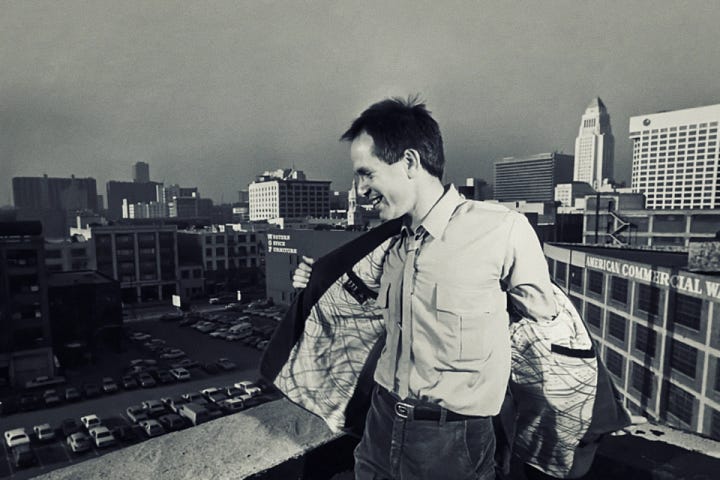
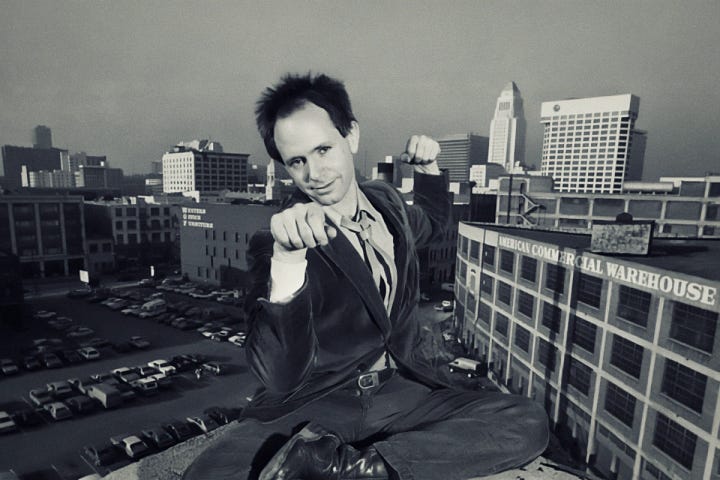
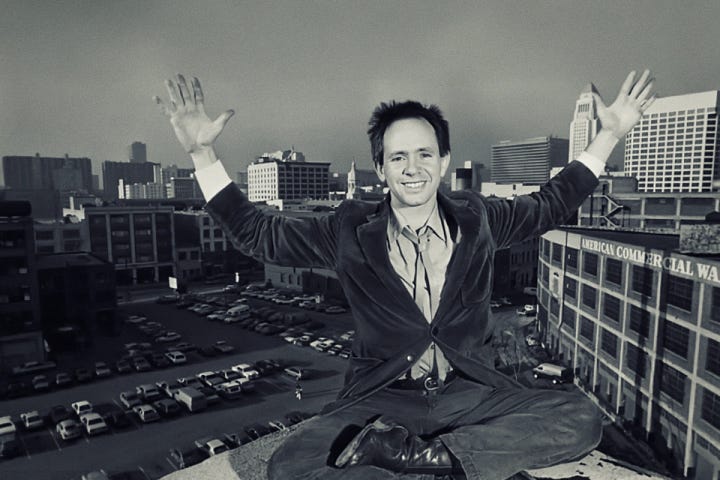
I discovered Peter Ivers going through random “fans also like” recommendations on Spotify while expanding the 70s playlist for this stack. It was actually the song “You used to be Stevie Wonder” that caught my eye — how do you skip over a song with that title?
At first, I just thought he had a couple of cool songs that didn’t really seem to fit in with the music of its time. It wasn’t until a few weeks later, after I realized I had been going back to those songs quite a bit, that I finally decided I needed to know something about the person who wrote them. It was only then that I realized that he was the person who originally composed and performed “In Heaven” — I actually did know his music, and for more than half of my life!
It was at that point I decided that I needed to write something about him, and it was only after starting that process, I realized how big of an undertaking it would be. Almost every part of his life seemed to involve someone or something notable, making it difficult to summarize without skipping over something of interest — which made the fact that I was just learning about him all the more shocking.
After spending months researching, it seems quite obvious who was involved in Peter’s murder, but it also seems like any hopes of actually solving his murder died in 2004. And I don’t really see opening the case again resulting in much beyond making the police unable to talk about it because it’s an open case. If anything, it’s the LAPD that should be investigated, but… I think we can all guess how that would turn out.
I think the best we can hope for is that Peter’s music and story is rediscovered by younger generations, not just as a curiosity of a lost era, but as a vital piece of a larger cultural puzzle.
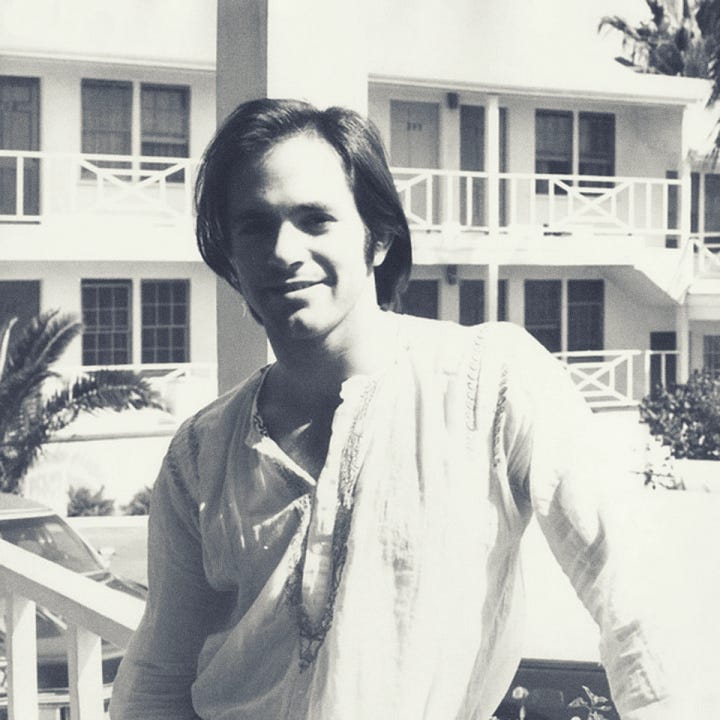
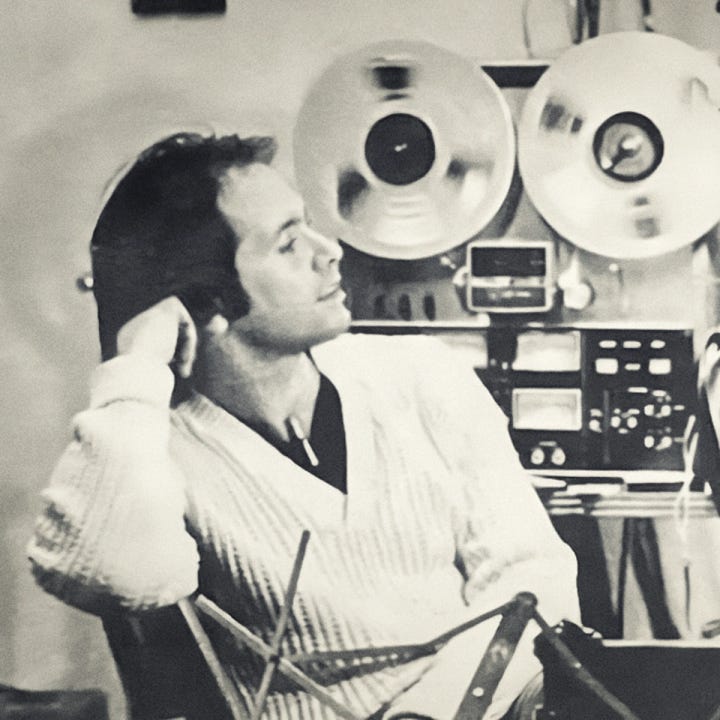
Peter Ivers Music Catalog
Theater Scores
The Bacchae, Charles Street Playhouse, 1968
Everyman, Harvard Agassiz Theater, 1969
Jesus: A Passion Play for Americans, 1969–1972 [Harvard then PBS]
Aladdin, 1981
Theater — Music & Lyrics
Nirvana Cuba (unfinished musical), 1977–1979
The Vitamin Pink Fantasy Revue, 1981–1982
Albums
Knight of the Blue Communion, Epic, 1969
Take It Out on Me, Epic, 1970 [unreleased until 2009, Wounded Bird Records]
Terminal Love, Warner Bros., 1974
Peter Ivers, Warner Bros., 1976
Nirvana Peter, Warner Bros., 1985
TV & Film scores
Various scores for American Film Institute students, 1972–1974
Eraserhead, 1977
Grand Theft Auto, 1977
Starsky and Hutch, “Class in Crime” [S3.E17], 1978
BJ and the Bear, "Never Give a Trucker an Even Break" [S1.E5], 1979
Airplane! (??), 1980
Love Theme from Filmex, 1980 [Film Festival]
Insight, "Hang Tight, Willy Bill" [S1.E822], 1982
Jekyll and Hyde Together Again, 1982
National Lampoon’s Vacation, 1983
IFRQ-FM Playlists
All tracks from every INFREQUENCY-FM playlist in one, long playlist. Just hit random & enjoy over 100 years of mostly lesser-known and obscure tracks from every decade from the 1910s to the 2020s!
Paul Isenstein reportedly also took the last name in an attempt to win Merle’s affection
Jug bands were surprisingly popular all across the country at the time
“Alive” being the key word: Little Walter had recently passed away around the time this was said
Though, in a 2019 interview with altaonline, Lucy Fisher recalls the time before she graduated — while she was dating Peter, who had graduated the year before — when she considered her options after school, and joining a "commune" was one of them. That would make sense if someone she was close to was already in one. Also: it's interesting that when Peter went out to LA (which is why Lucy didn’t join the commune), the job he found was carpentry. When the Lyman Family/Fort Hill Community — who were known for their carpentry skills — moved out to LA, they eventually turned it into a multi-million dollar enterprise called Fort Hill Construction that’s still thriving as of 2025.
It was eventually released in 2009 by Wounded Bird Records, a compact disc only record label that re-releases lesser-known albums from popular and lesser-known artists. Most of the Wounded Bird catalogue is licensed from Warner Music Group
Which is why I think “Audience of One” is my favorite song of his. I’m assuming it’s still just about love/relationships, but cloaked in lyrics that don’t make it obvious. For instance: I have no idea what “A silhouetted circus introduced by phantom fingers, a hard ring master ordering the show” actually means, but I like it. It just sounds cool.
Though, technically, Ronnie Rocket was his second movie, but the studio didn’t like it, so they gave him a list of scripts written by others that he could direct and he chose Elephant Man by Chris de Vore and Eric Bergren
Eerily mirroring the time when they both moved back to the east coast, leaving Peter behind in LA
For some reason, even Discogs credits Linda Perry [member of 4 Non Blondes, songwriter, producer] for producing this album… thing is: that Linda Perry was only 20 years old in 1985. A press release for the album says it was produced by “long-time Ivers associate Linda Perry”. Peter died when Non-Blonde Linda was still 17. “Long-time” associate of a 36-year-old at 17?
It’s especially suspect because there doesn’t appear to be any record of Non-Blonde Linda spending time in LA, only San Diego, before she moved to San Fransisco, where she started her music career at 21.
The only thing that gives me pause was the point I was going to close with: if she was producing records for Warner Bros when she was 20 years old [which is technically possible], why was 4 Non Blondes on Atlantic? … "In 1967, Atlantic became a wholly owned subsidiary of Warner Bros". Oh… that’s… interesting. I’m still gonna say it was a different person until I see some kind of confirmation… because that does kinda bring up some other questions if true.
Ordo Templi Orientis (O.T.O.; lit. 'Order of the Temple of the East' or 'Order of Oriental Templars') is an occult secret society and hermetic magical organization founded at the beginning of the 20th century. The origins of O.T.O. can be traced back to the German-speaking occultists Carl Kellner, Theodor Reuss, Heinrich Klein, and Franz Hartmann. After the death of Reuss, English writer and occultist Aleister Crowley assumed control of the Order. The guiding philosophy of O.T.O. from this point on became Crowley's self-created occult system, Thelema.
4 miles away from Harvard, though a few years before Peter would be attending
At the request of Jon Belushi, who was friends with Jove and became a fan of the band from seeing them perform for NWT
Coincidentally, The Cure released an album also called The Top in 1984 — not related, just thought it was an odd concept to be popular as a title
Additionally: Why would some rando burglar go all the way to the sixth floor just to take a tape recorder, when there was more-valuable video equipment around?




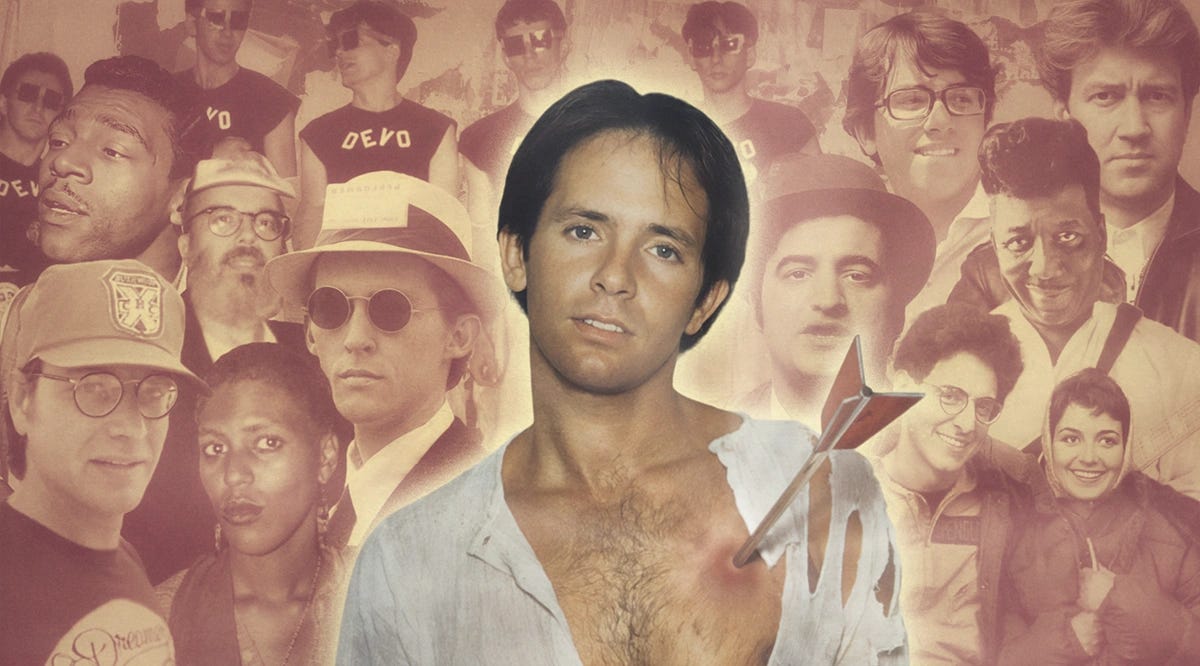

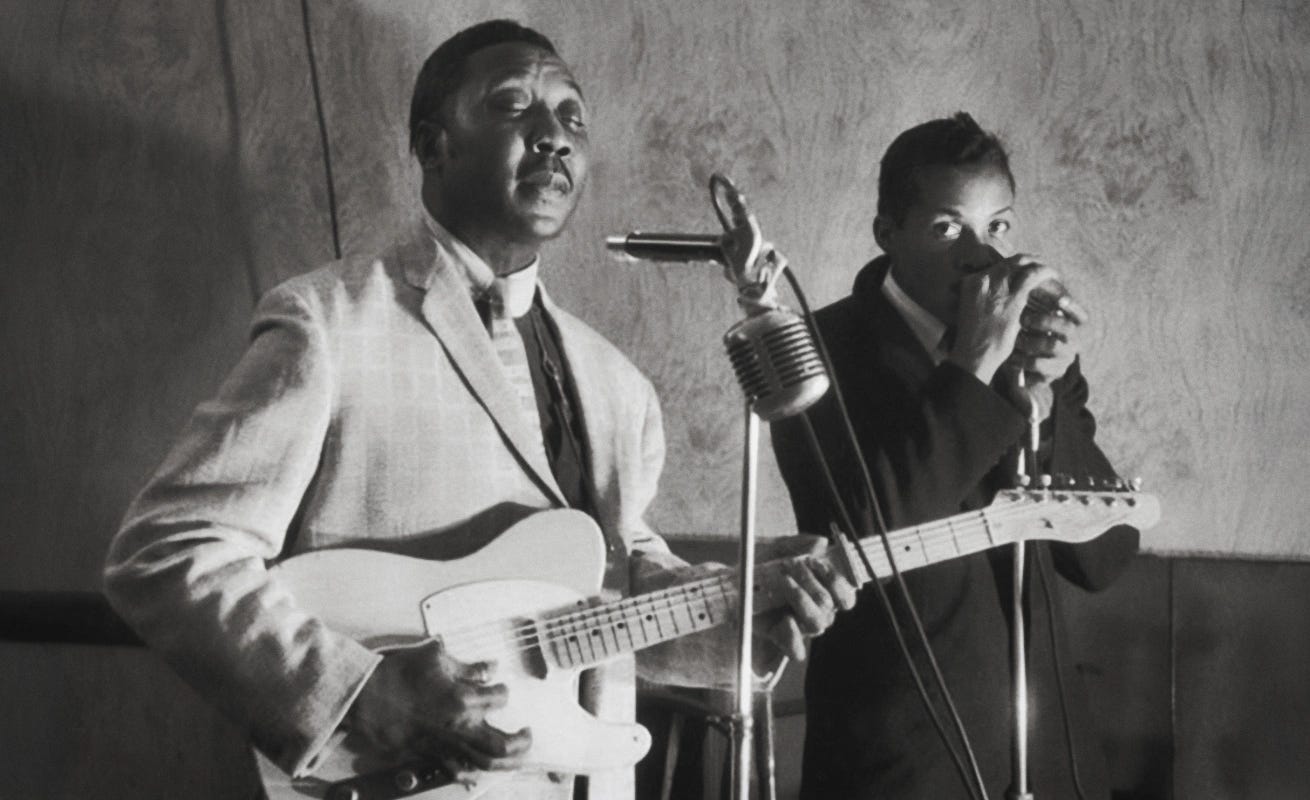
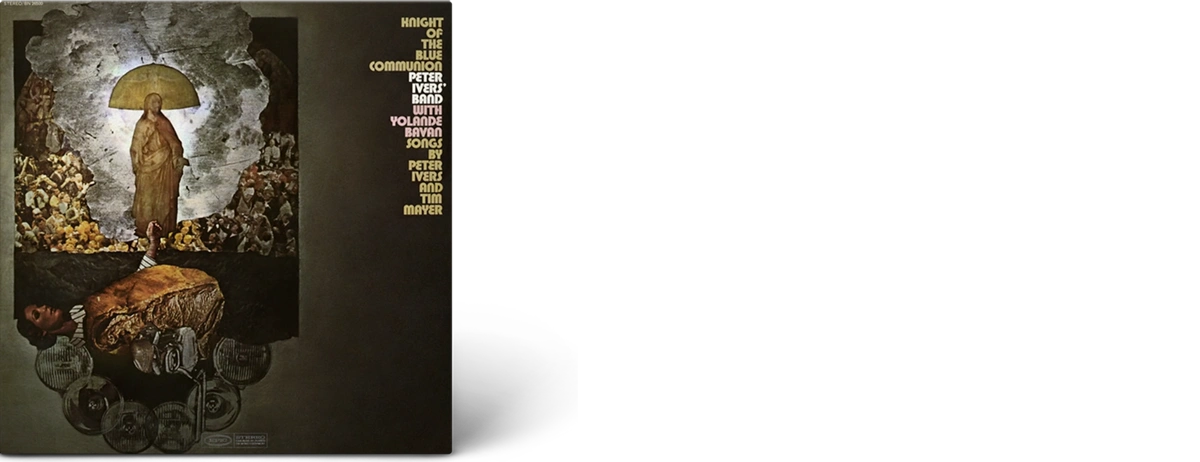
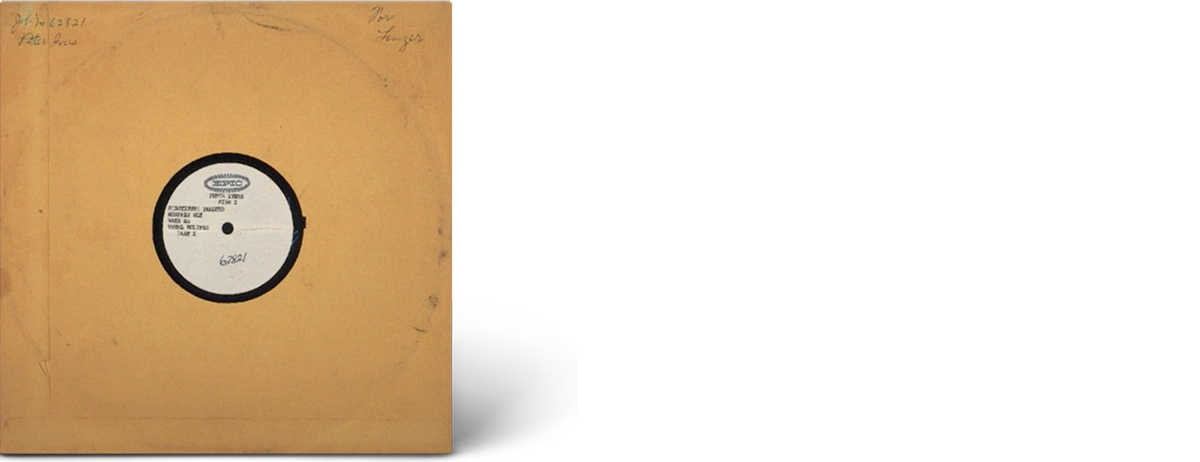
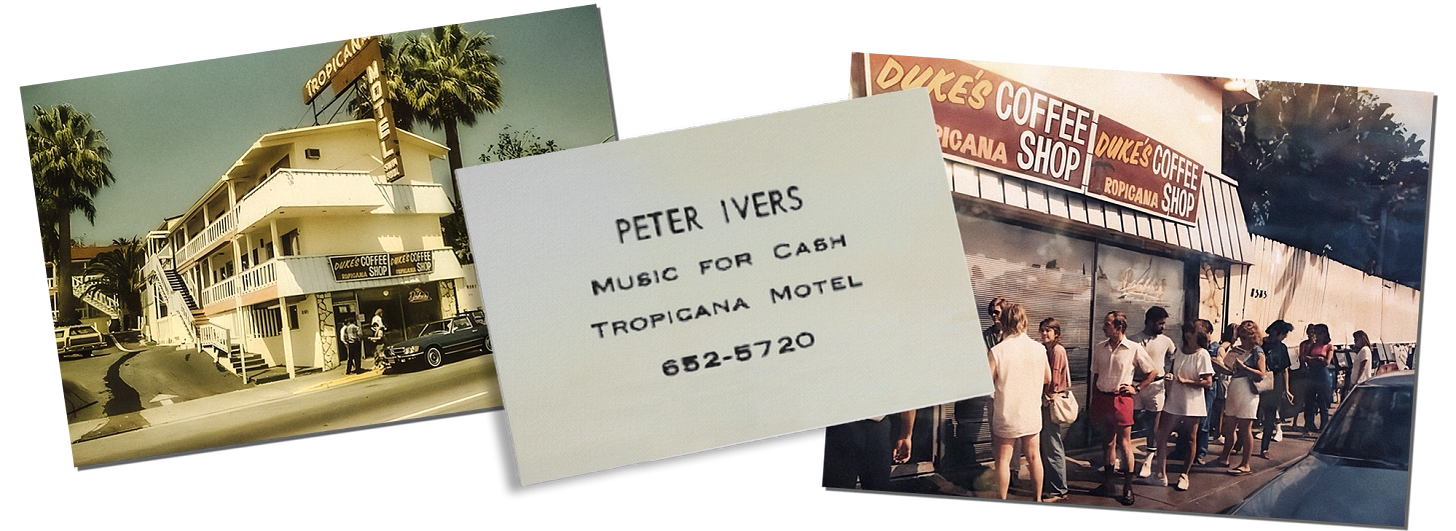
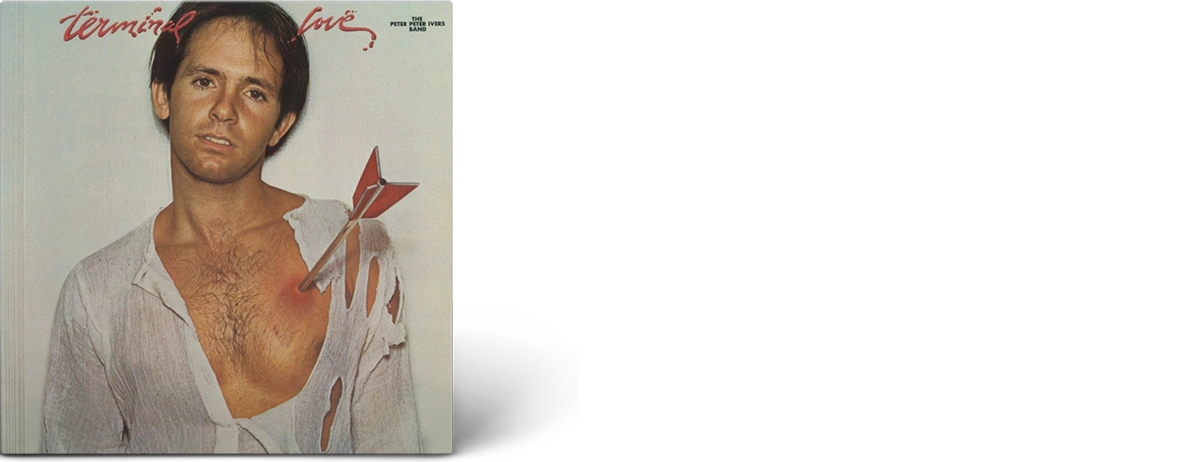
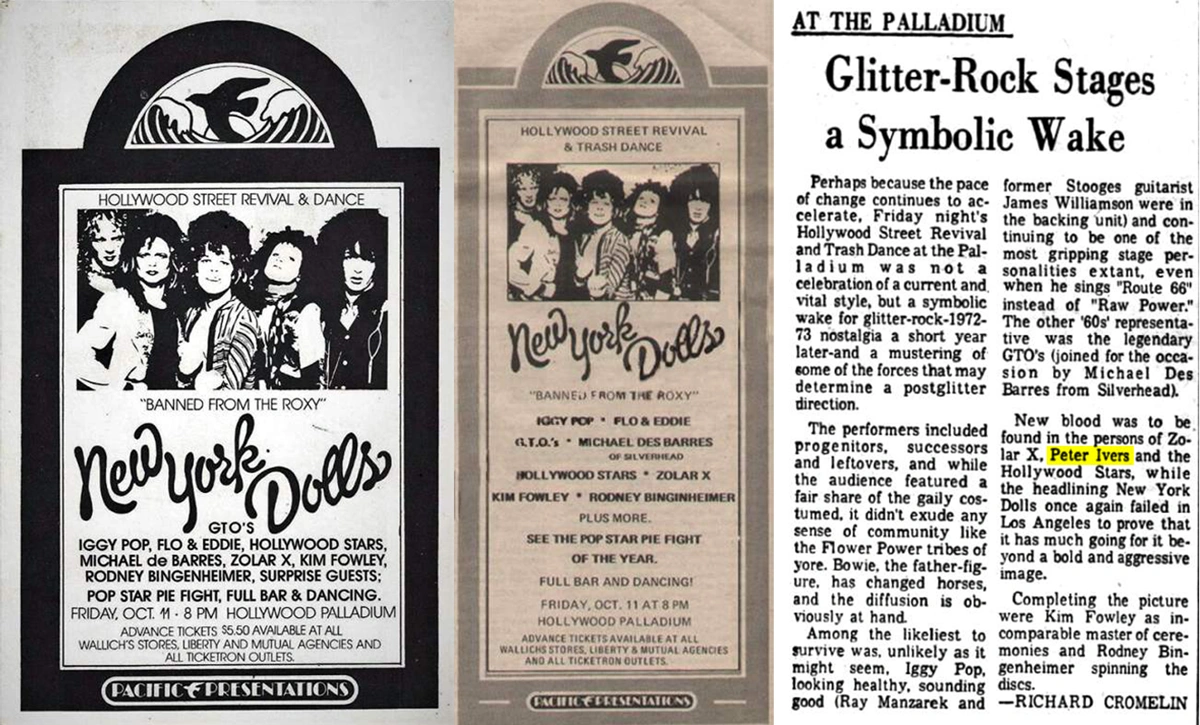

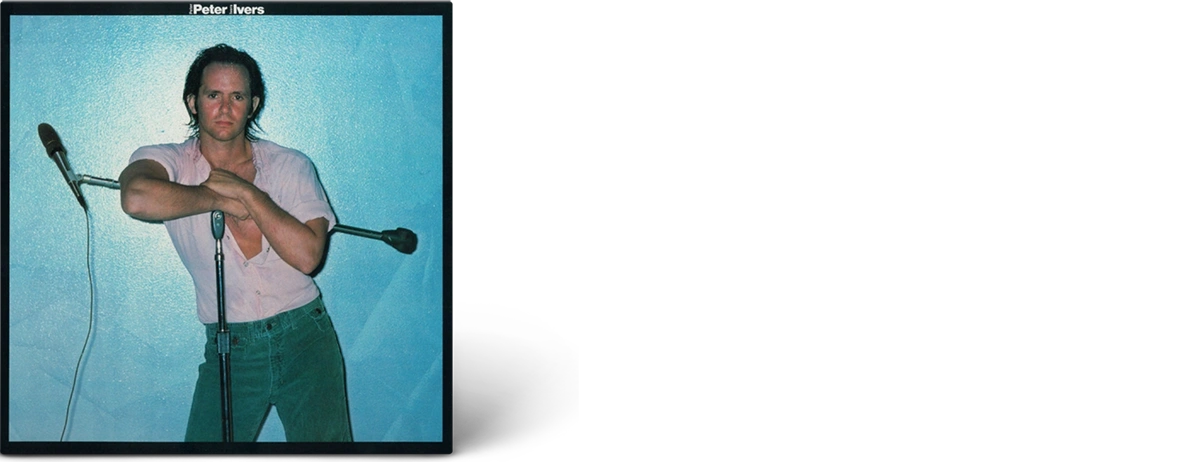


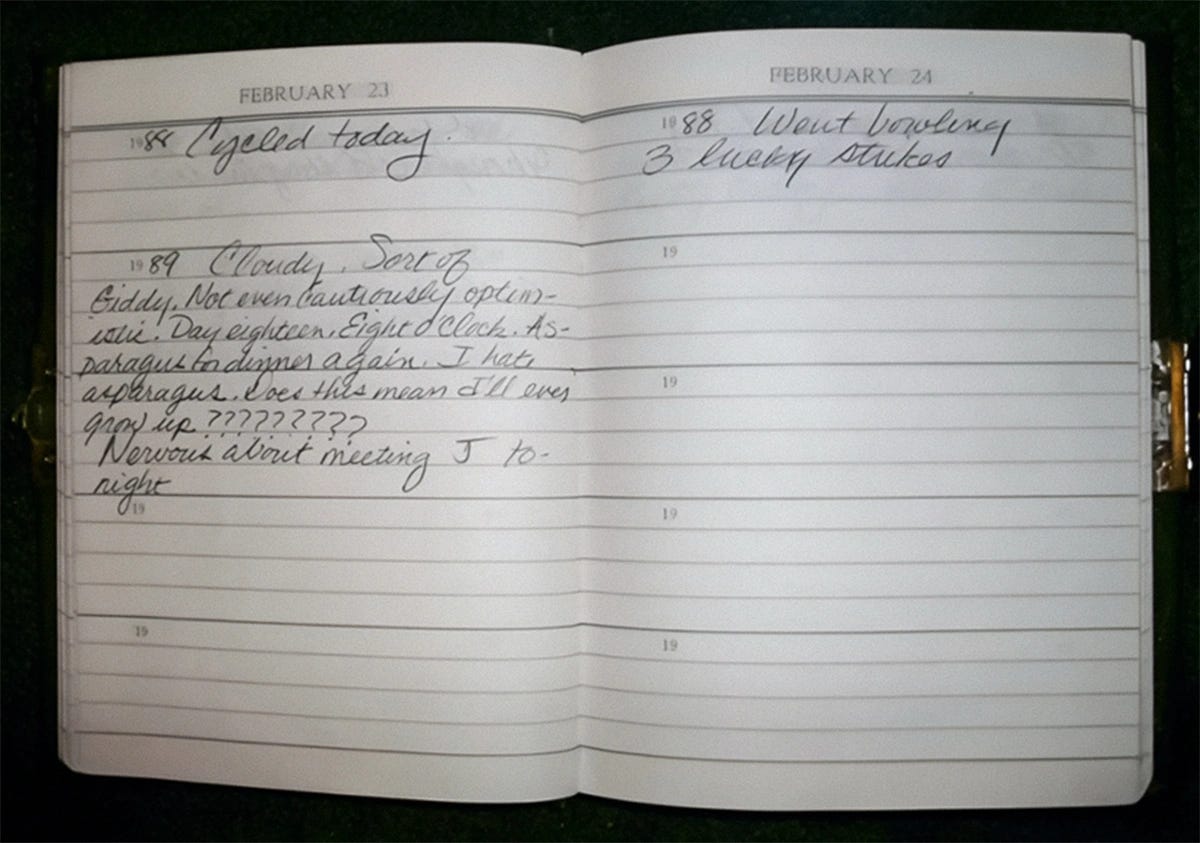
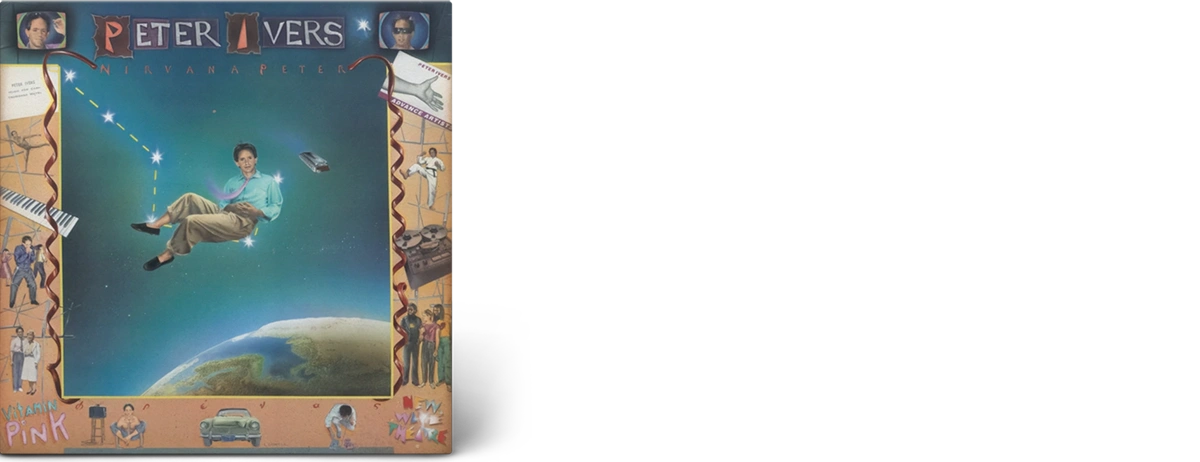
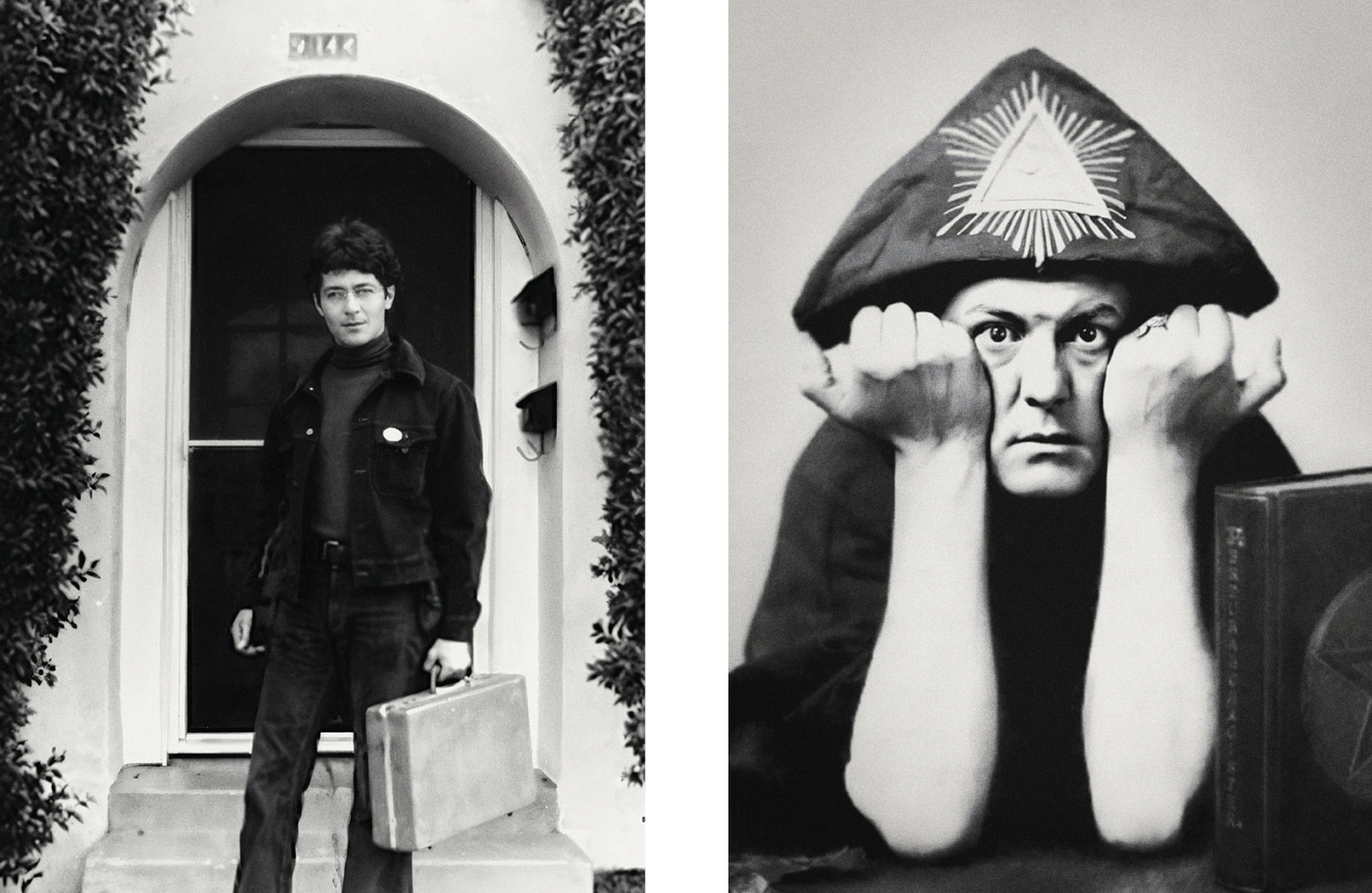
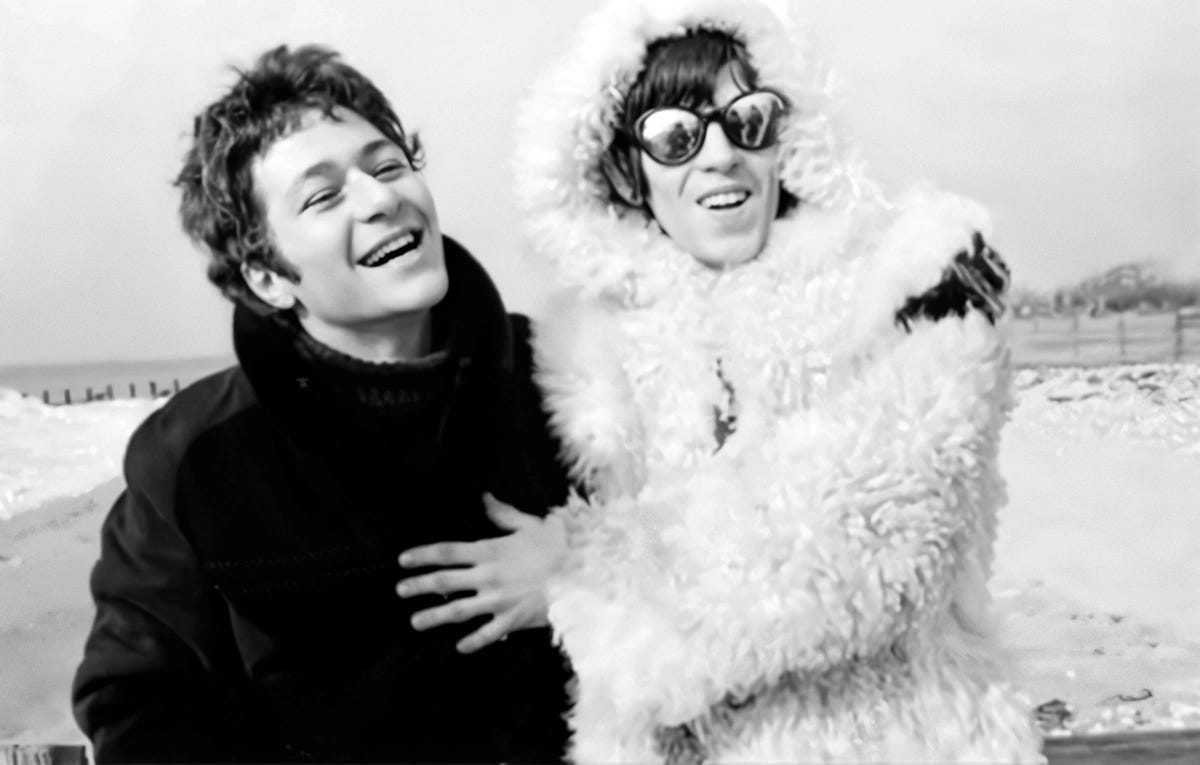
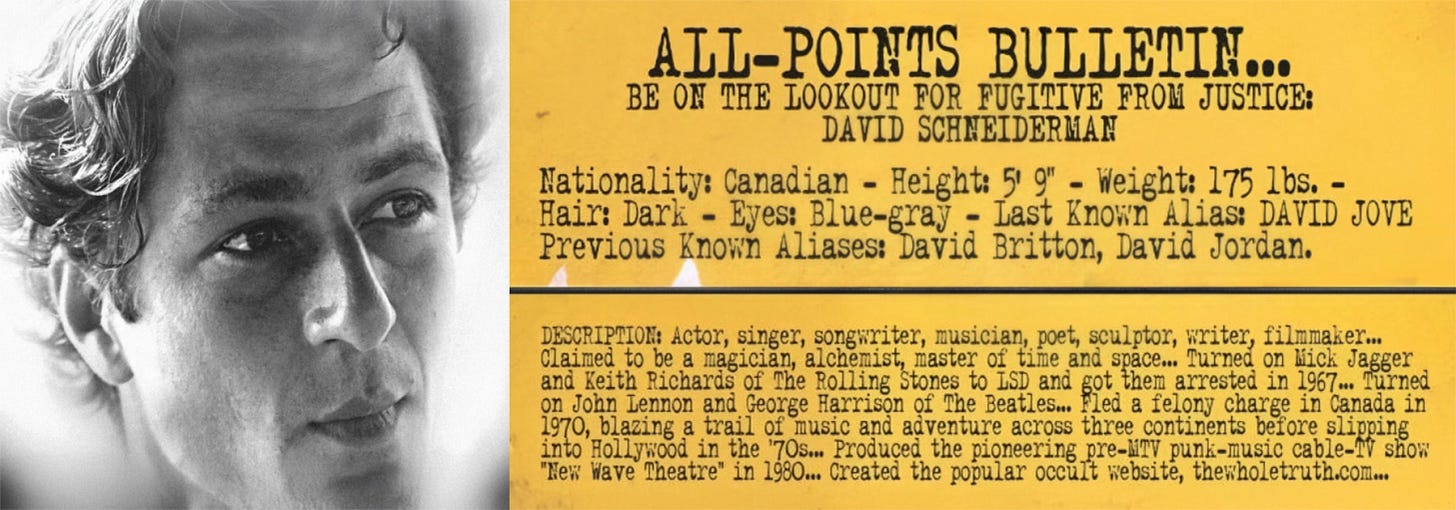

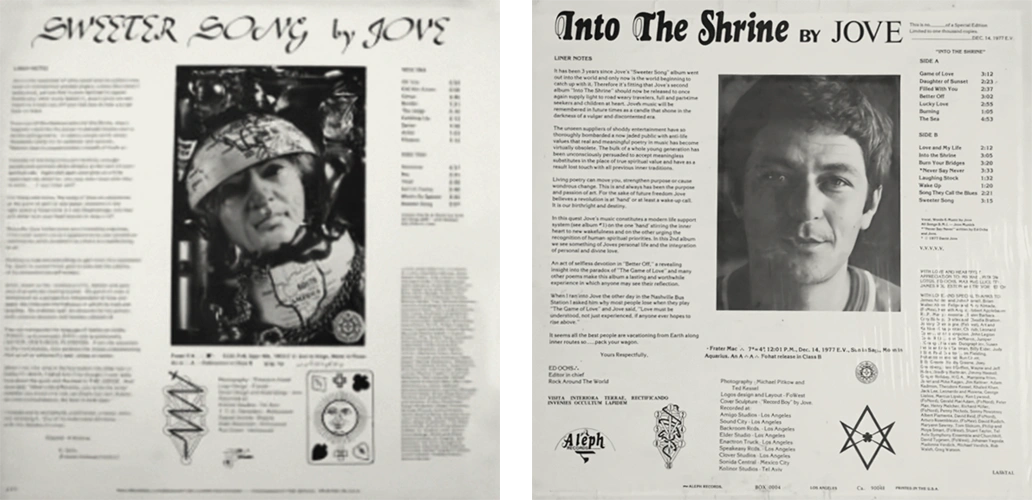

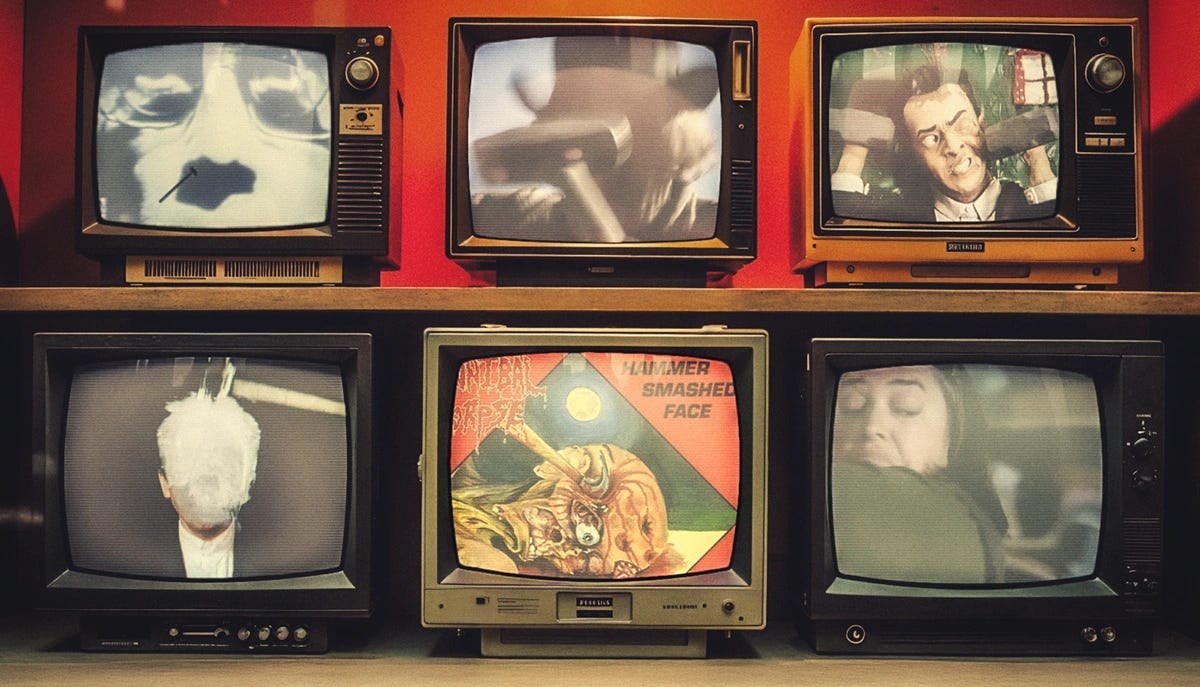

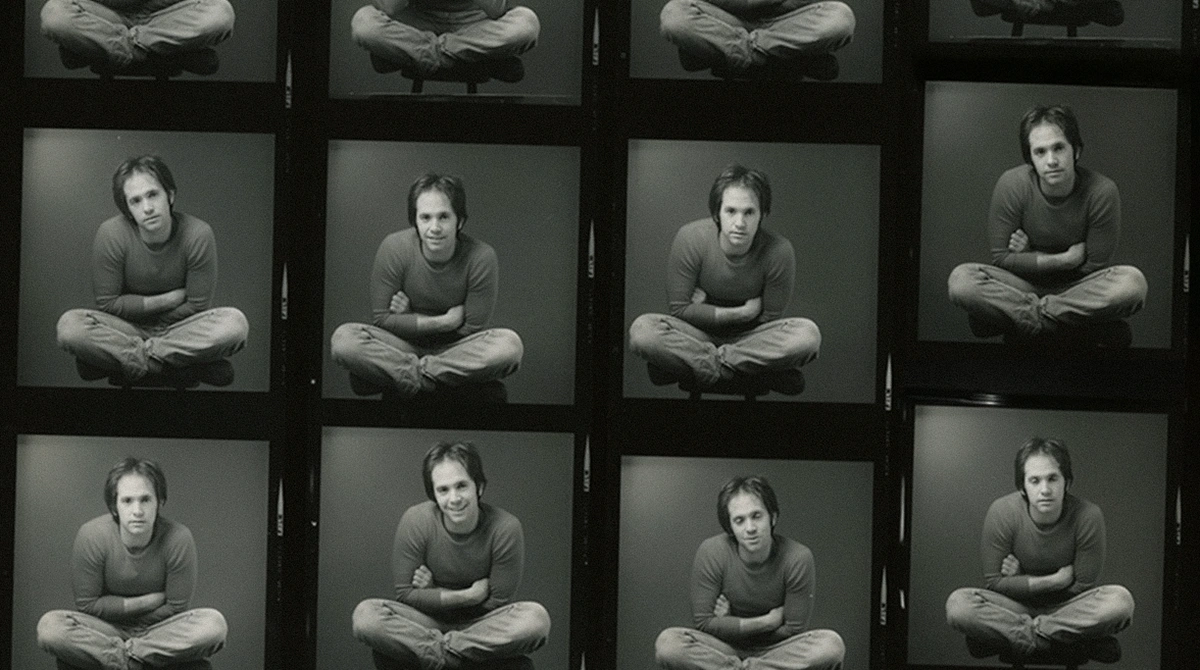
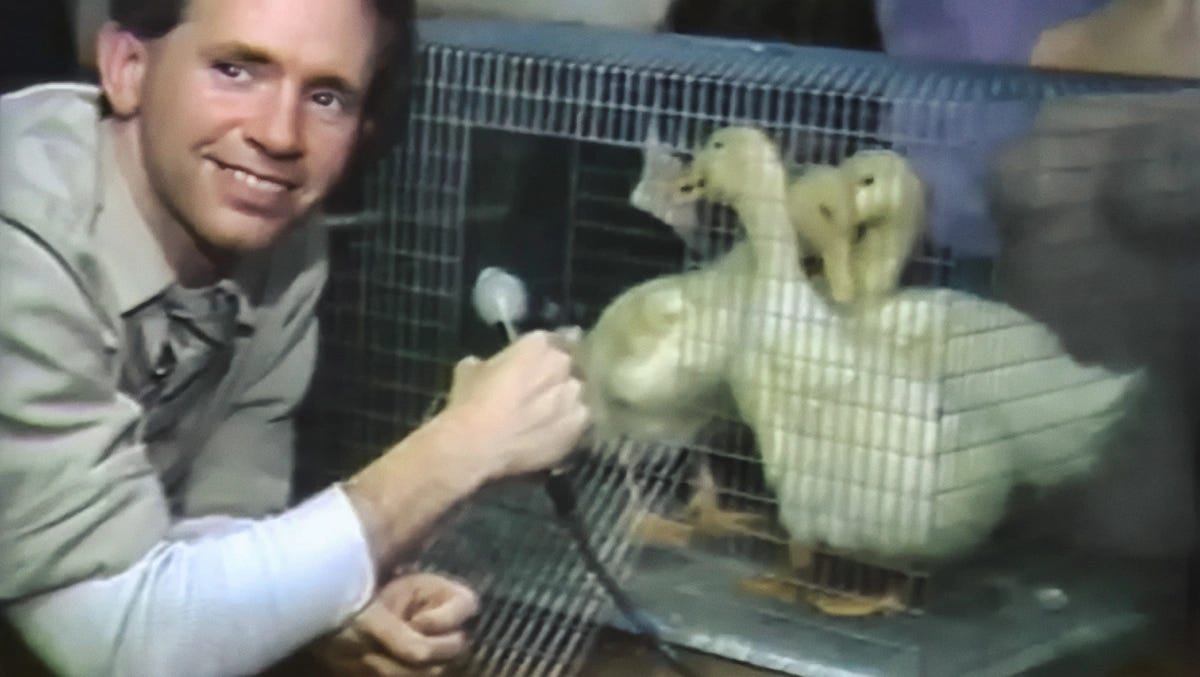
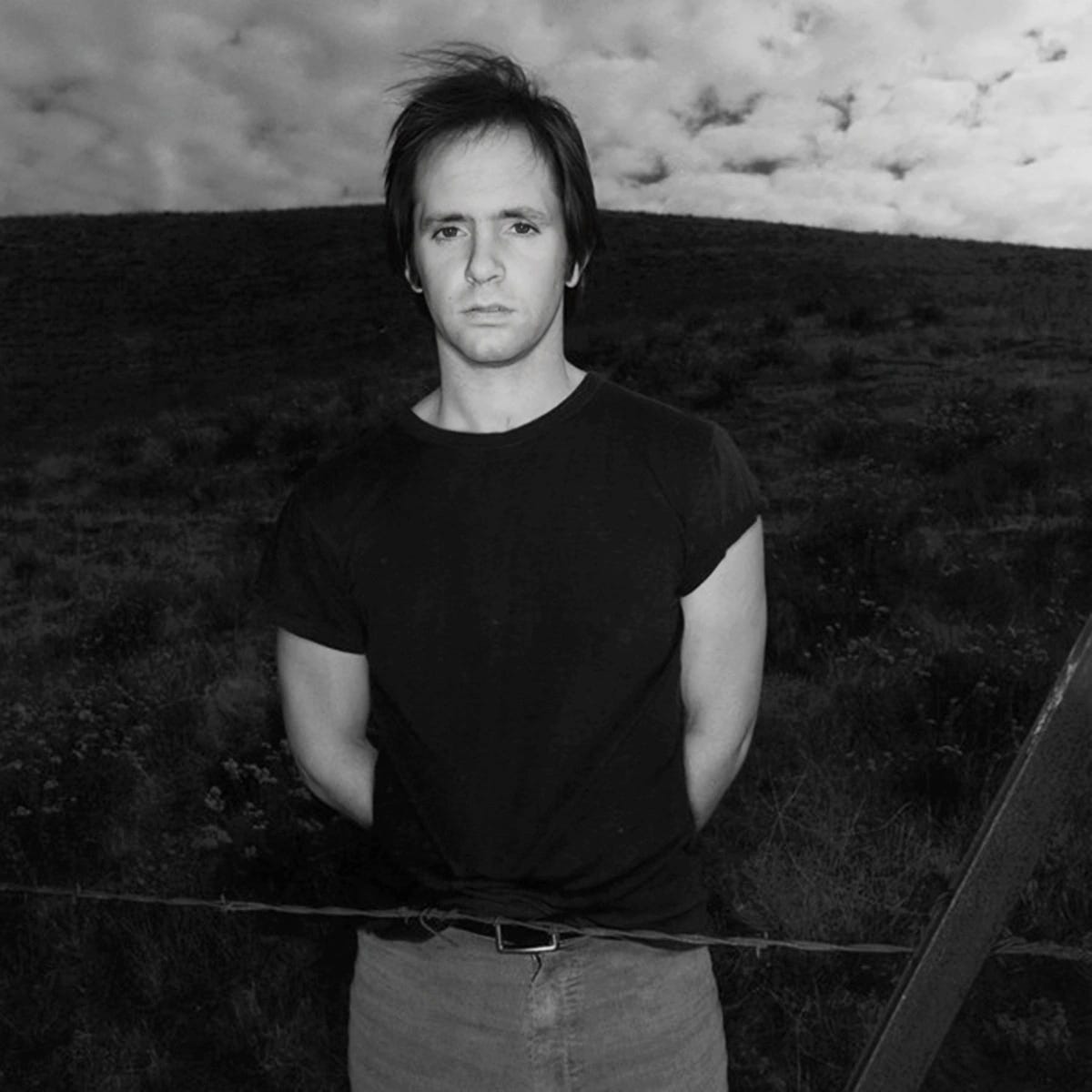

DOWNRIGHT BRILLIANT! Are you listening NEW YORK TIMES? ROLLING STONE? NEW YORK POST, even. RIGHT ON, Mr. Nuk, Right on. JIM FRAGALE here thinks you are under appreciate. Wake up, Universe!
This would make a good movie...